Japan was the first country my partner and I visited together as a couple, and since then, it has remained one of our favorite destinations. We’ve returned multiple times, but always in the mild seasons of spring and fall. In 2024, we got a unique chance to spend three weeks in Japan—but this time, in the peak of summer (July/August), when the heat can be intense! Determined to make the most of it, we researched the best cool places to visit in Japan in summer and discovered misty mountains, charming villages, and even snowy peaks.
This guide is a collection of our favorite cool-weather escapes, perfect for anyone looking to experience Japan’s breathtaking nature, rich culture, and outdoor adventures—without the summer heat slowing you down.
1. Hokkaido: The Ultimate Summer Escape
Summer Heat Level: 🔥 (Cool & Refreshing)
Our three-week summer journey through Japan began in Hokkaido, and we couldn’t have chosen a better place to start. As Japan’s northernmost island, Hokkaido offers a refreshing escape from the country’s intense summer heat. With its mild temperatures, breathtaking landscapes, and vibrant seasonal flower fields, it felt like stepping into a completely different side of Japan—one filled with wide-open spaces, stunning natural beauty, and crisp, clean air.
From rolling lavender fields to scenic coastal drives, Hokkaido in summer is a dream destination for those seeking both relaxation and adventure. It set the perfect tone for our trip, offering a cool and colorful welcome to our Japan summer experience.
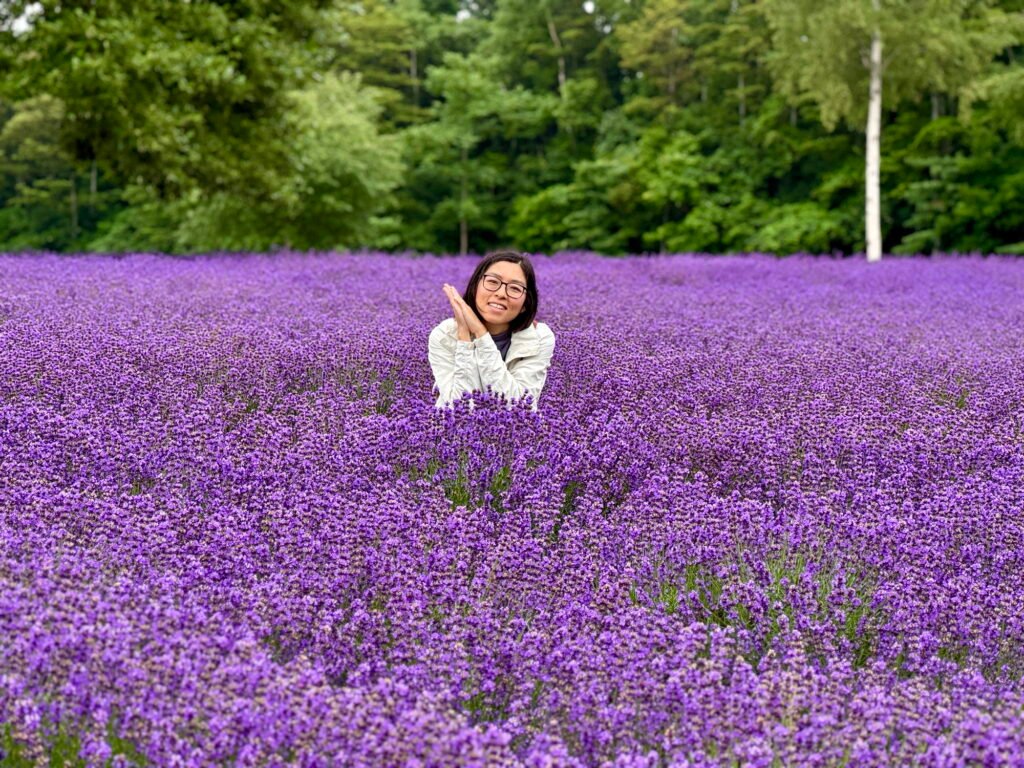
Our Favorite Spots in Hokkaido for Summer:
- Sapporo – A lively city with green parks and a cool summer breeze.
- Otaru – A picturesque canal town, perfect for fresh seafood and a relaxing stroll.
- Furano & Biei – Famous for lavender fields and rolling hills.
- Jozankei Onsen – A peaceful hot spring town surrounded by mountains and forests.
For more inspirations and practical travel tips, refer to our detailed Hokkaido summer guide here: 6-Day Hokkaido Summer Itinerary Without a Car.
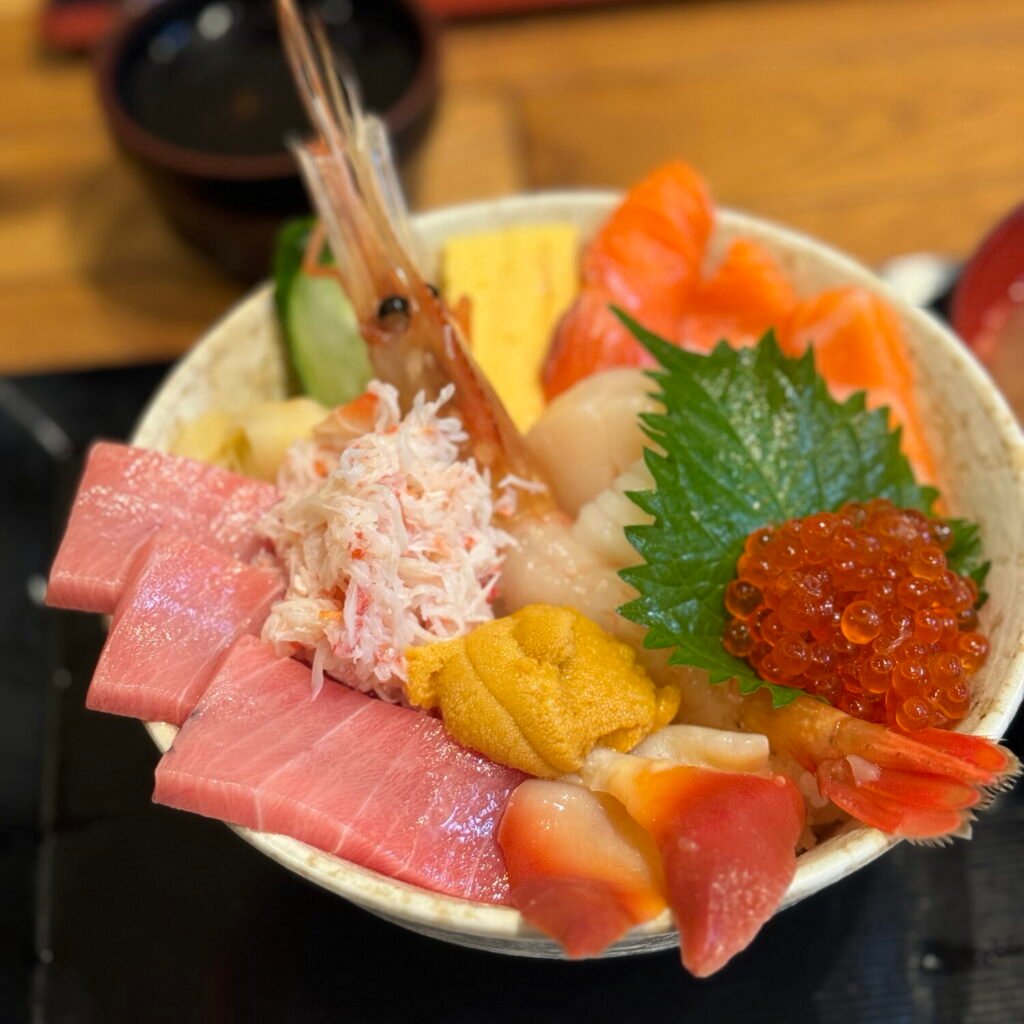
@ Sapporo Nijo Market

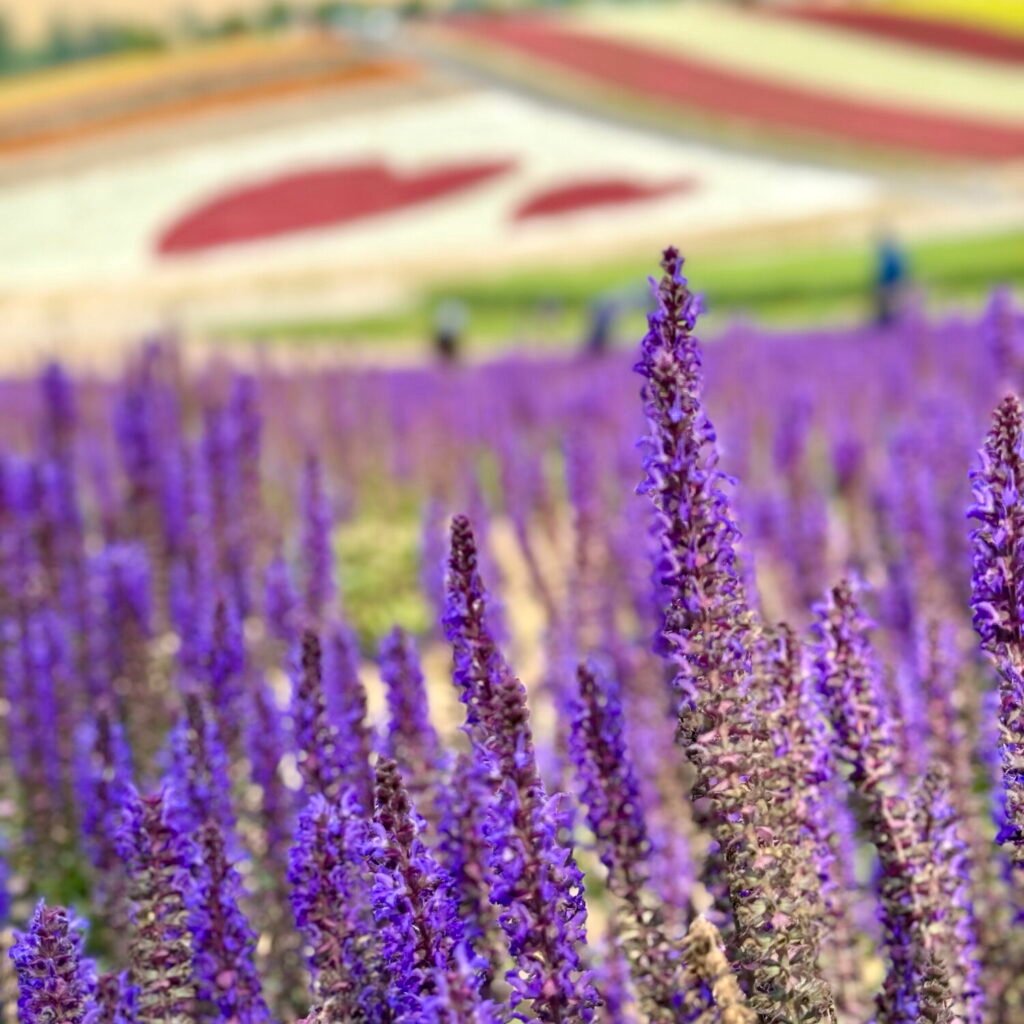

2. Tateyama Kurobe Alpine Route: Snow in Summer!
Summer Heat Level: 🔥 (Cool & Refreshing)
The Tateyama Kurobe Alpine Route was one of the most unique and unforgettable experiences of our three-week summer trip to Japan! This breathtaking mountain journey took us through dramatic alpine landscapes, where we marveled at snow-capped peaks, lush valleys, and the iconic Kurobe Dam—all in the middle of summer. Even in July, some areas were still blanketed in lingering snow, creating a surreal contrast to Japan’s sweltering cities.
One of the best parts? The refreshingly cool temperatures! Unlike the heat and humidity of the lowlands, the high-altitude climate meant we needed a warm hoodie/sweater plus a windproof jacket—a rare and welcome escape from Japan’s summer heat.
And then there was the journey itself—navigating the multiple transportation modes (cable cars, trolley buses, ropeways, and funiculars) felt like a fun adventure, with each ride offering a new perspective of the stunning alpine scenery. With dramatic landscapes, fresh mountain air, and a touch of adventure, the Tateyama Kurobe Alpine Route is an absolute must for anyone looking to experience Japan’s wild and rugged beauty in summer.
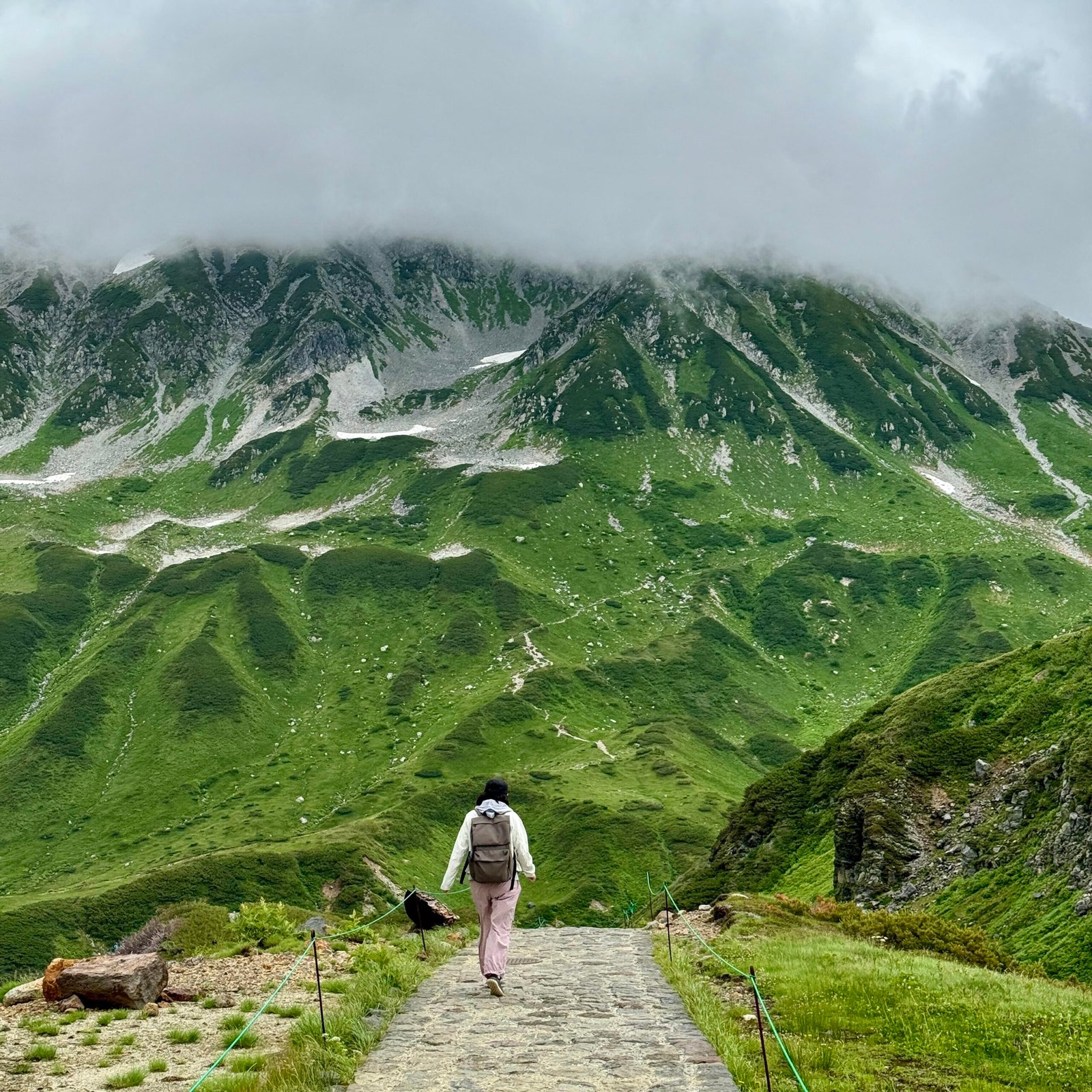
Must-visit spots along the Alpine Route:
- Murodo Plateau – The highest point on the Alpine Route, offering breathtaking panoramic views, scenic hiking trails, and cool mountain air,
- Mikurigaike Pond – A picturesque volcanic lake with crystal-clear blue waters, reflecting the surrounding peaks.
- Daikanbo – An observatory deck that offers unparalleled views of the rugged alpine landscape and Kurobe lake. The journey here via cable car is an experience in itself!
- Kurobe Dam – Japan’s largest dam, famous for its massive water discharge during summer, creating an awe-inspiring display of power and misty refreshment.
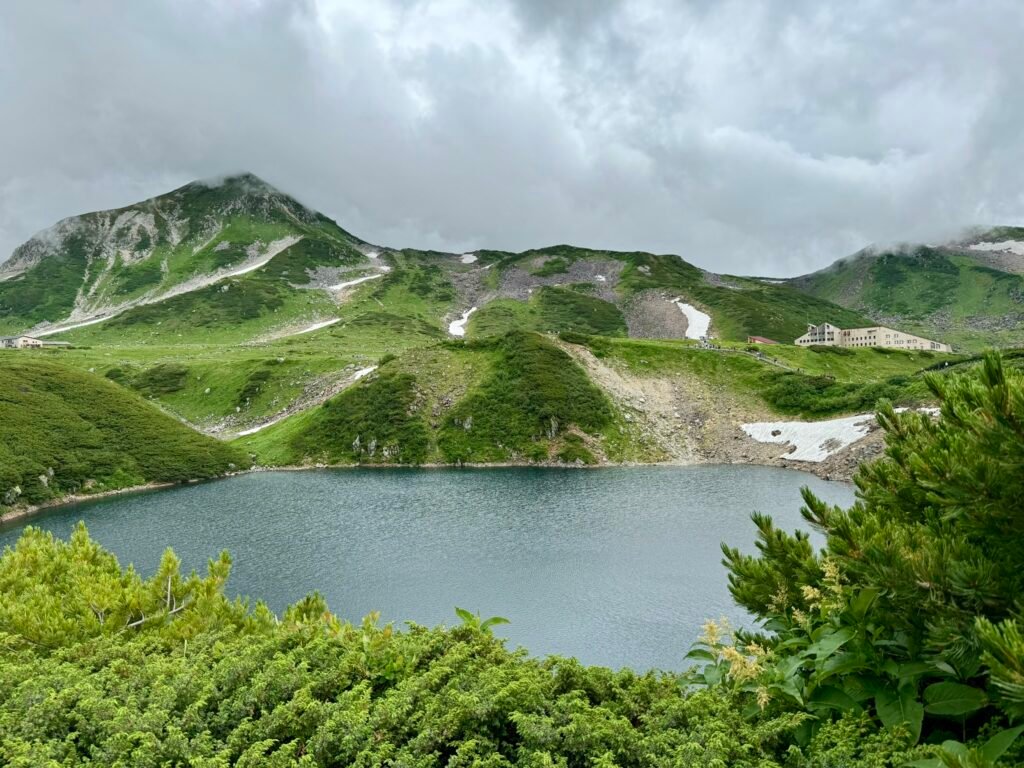
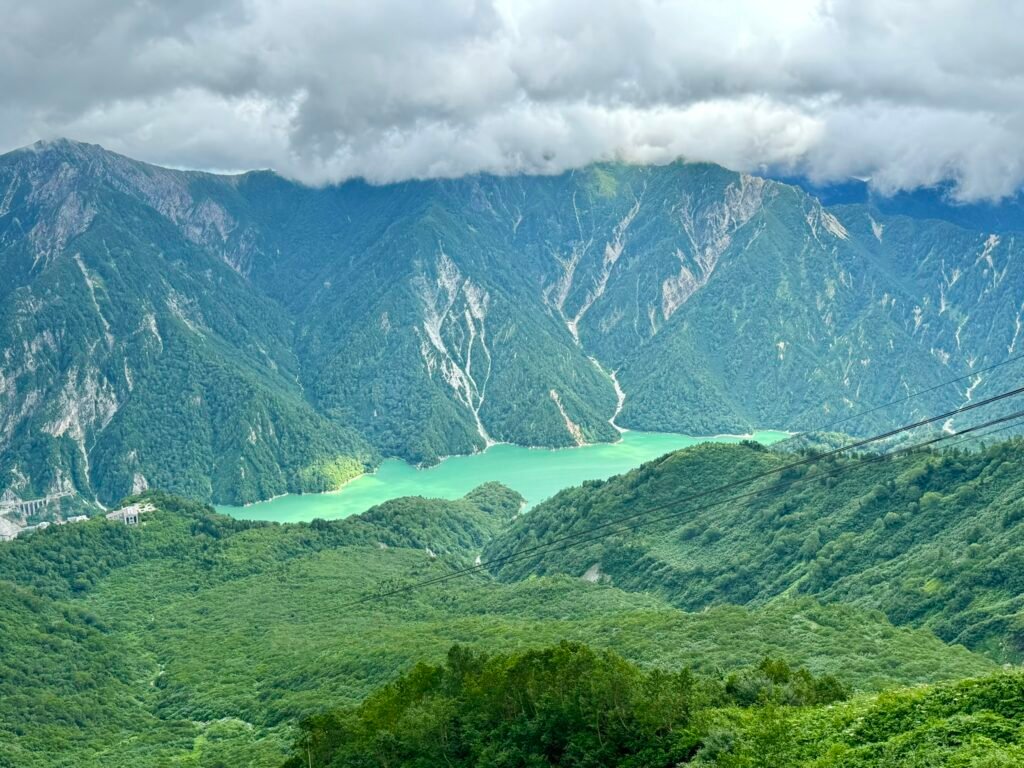


3. Kamikochi: The Ultimate Summer Hiking Destination
Summer Heat Level: 🔥 (Cool & Refreshing)
As nature lovers, we couldn’t have asked for a more perfect summer retreat than Kamikochi. Nestled in the heart of the Northern Japan Alps, this stunning alpine valley felt like a hidden paradise, offering crisp mountain air, crystal-clear rivers, and breathtaking peaks.
What made Kamikochi even more special was its authentic, local atmosphere. Unlike other popular destinations packed with international tourists, we found ourselves hiking alongside locals—Japanese grandparents, families with young children, and students on summer trips and camps. It felt like a true getaway into Japan’s untouched nature, where we could fully appreciate the country’s culture and deep connection to the mountains.
Whether you’re looking for a leisurely stroll along the Azusa River or a challenging hike with panoramic views, Kamikochi’s well-maintained trails cater to all levels. With no cars allowed, the valley remains peacefully untouched, making every step feel like a journey into Japan’s purest wilderness. For those seeking a cool and refreshing escape from the summer heat, Kamikochi is truly a slice of heaven.

The Best Way to See Kamikochi:
We started our journey at Taisho Pond and walked the scenic Azusa River trail all the way to Myojin Pond. This gentle, well-maintained path (7.2km/4.5 miles) is mostly flat and shaded, making it an easy and enjoyable way to take in Kamikochi’s natural beauty. Along the way, we passed serene ponds, lush marshland, and iconic wooden bridges—each offering a different perspective of this breathtaking alpine valley.
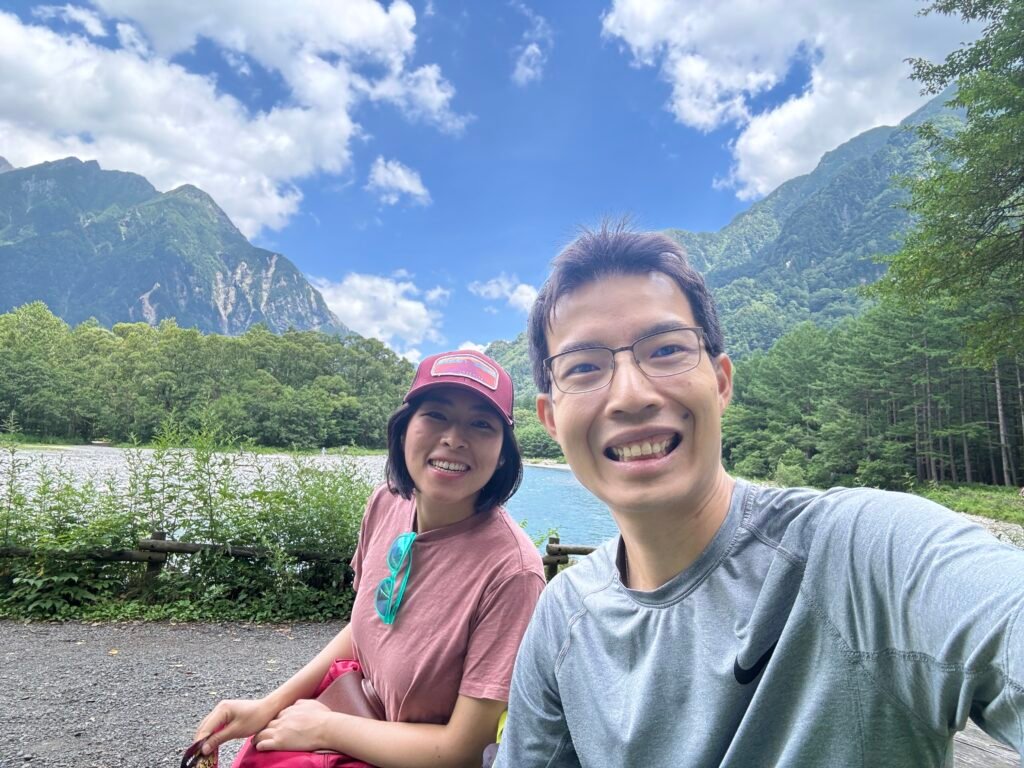

Here are our favorite spots along the hike:
- Taisho Pond – A stunning lake formed by a volcanic eruption, famous for its mirror-like reflections of the surrounding mountains and dead trees rising from the water.
- Tashiro Pond & Tashiro Marsh – A peaceful area surrounded by lush marshland, diverse wildlife, and sweeping grasslands. Walking through its scenic boardwalks, we immersed ourselves in Kamikochi’s unique wetland ecosystem and natural beauty.
- Kappa Bridge – A charming wooden suspension bridge and one of Kamikochi’s most iconic spots. It offers breathtaking panoramic views of the Azusa River and the towering Hotaka Mountain Range. This is also a great place to grab a snack or lunch and soak in the atmosphere.
- Myojin Pond – A tranquil pond nestled in the forest, home to the historic Hotaka Shrine’s Myojinsha. This is a spiritual and serene spot, perfect for quiet reflection and nature photography.




4. Kurobe Gorge: Scenic Train Ride Through Nature
Summer Heat Level: 🔥 (Cool & Refreshing)
Carved deep into the mountains, Kurobe Gorge is one of the deepest gorges in Japan, and where we experienced one of Japan’s most scenic, unforgettable railway journeys—the Kurobe Gorge Railway. This scenic open-air train ride carried us through a lush valley of towering cliffs, dense forests, and jade-colored rivers—a landscape that felt untouched by time.
What made this ride even more special was the cool mountain air rushing through the open windows. In the peak of summer, it was so refreshing that we even felt chilly at times—a rare and welcome feeling in Japan’s heat! Gliding through the gorge, crossing dramatic bridges, and passing through narrow tunnels, we were completely immersed in Japan’s wild and rugged beauty.
If you’re looking for a cool and scenic summer escape in Japan, Kurobe Gorge is an experience you won’t want to miss!

Highlights of Kurobe Gorge:
- Take the Kurobe Gorge Railway – Opt for the open-air cars without windows for unobstructed, breathtaking views of the mountains, rivers, and deep valleys.
- Yamabiko Trail – A scenic hiking trail that starts near Unazuki Station (the starting point of the Kurobe Gorge Railway) and leads to Shin-Yanagawara Power Plant, Unazuki Dam and Komen Bridge, with beautiful forest and river views along the way.
- Yamabiko Bridge – This iconic red pedestrian bridge is where the original Kurobe Gorge Torokko track once ran. Today, it serves as a fantastic viewpoint. We watched the train cross the Shin-Yamabiko Bridge above while enjoying the breathtaking scenery of the gorge. Fun fact: The name “Yamabiko” (meaning “mountain echo”) comes from the sound of the train echoing through the hot spring resort, creating a unique and atmospheric experience.
- Atobiki Bridge – One of the tallest bridges in Kurobe Gorge, located near Kuronagi Station. It’s a great spot to enjoy amazing river views from high above the valley and take in the beauty of the gorge.
- Kuronagi Onsen – An outdoor hot spring just a short walk from Kuronagi Station. It’s the perfect spot to relax and enjoy a soothing soak deep in nature.
- Walk along Keyakidaira – The final stop of the railway, offering scenic hiking trails through the gorge’s untouched wilderness.
- Unazuki Onsen Town – The gateway to Kurobe Gorge, this charming hot spring town is perfect for a post-adventure soak and some local dining.
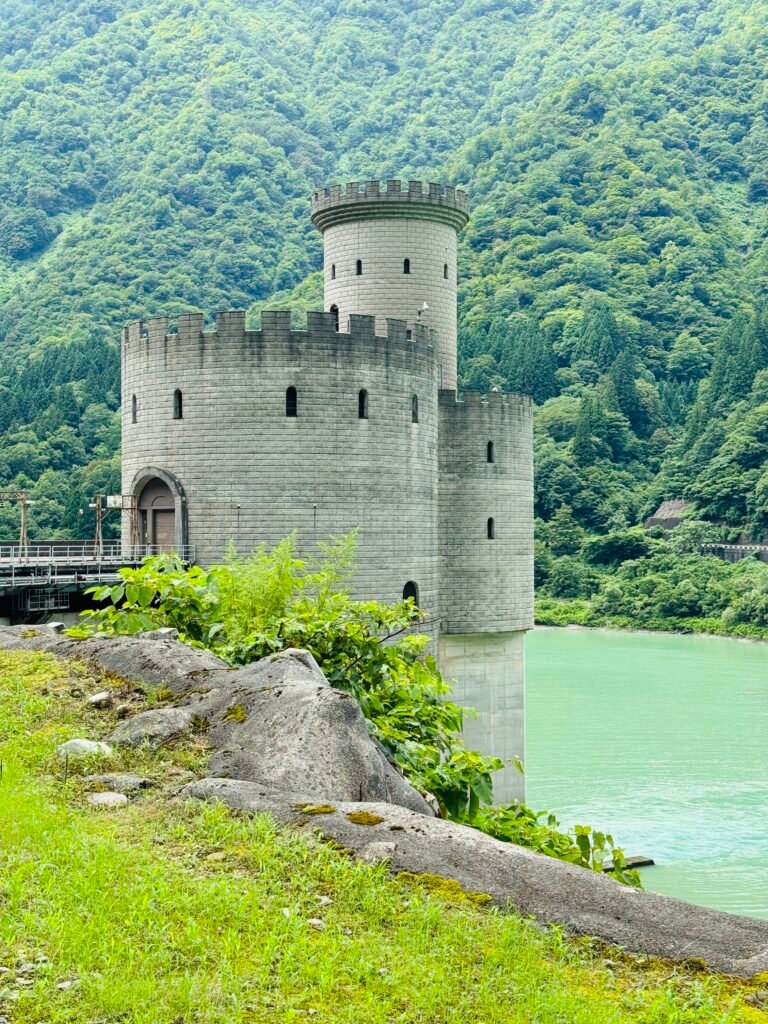


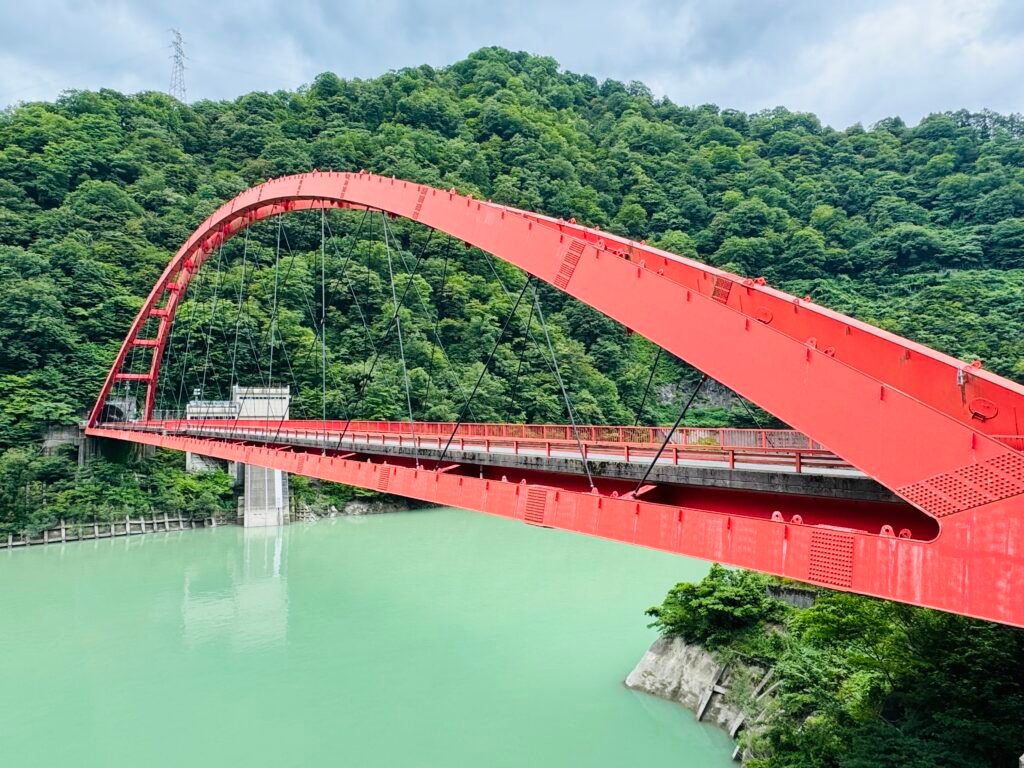
5. Shirakawa-go: A Fairytale Village in the Mountains
Summer Heat Level: 🔥🔥 (Hot in mid-day, but overall manageable)
Stepping into Shirakawa-go felt like walking into a scene from a storybook—a place where time slows down, and tradition lives on. This UNESCO World Heritage Site is famous for its iconic gassho-zukuri farmhouses, their steep thatched roofs designed to withstand heavy snowfall. While most travelers dream of visiting in winter, when the village is blanketed in snow and illuminated like a true fairytale scene, we discovered that Shirakawa-go is just as magical in summer.
Though midday can get hot, the surrounding mountains and lush rice fields create a refreshing escape from Japan’s intense summer heat. The green landscapes, wooden houses, and peaceful countryside atmosphere made our visit one of the most unforgettable experiences of our trip. Whether you’re admiring the farmhouses up close, walking through the rice fields, or soaking in the village’s quiet charm, Shirakawa-go is a summer destination that deserves a spot on every Japan itinerary.

Best experiences in Shirakawa-go:
- Take a short hike to Shiroyama Viewpoint. From the top, you’ll get a breathtaking bird’s-eye view of the traditional gassho-zukuri farmhouses nestled in the valley, surrounded by lush mountains in summer.
- Wander through Shirakawa-go’s charming thatched-roof village. Take your time exploring the narrow streets, soaking in the peaceful countryside atmosphere, and admiring the historic wooden homes. Walk through the surrounding rice fields, where the vibrant green paddies add to the village’s picturesque beauty in summer.
- Step into history and tradition by visiting open-air museums like Wada House, Kanda House, Nagase House, and Myozenji. These well-preserved gassho-zukuri farmhouses showcase how people lived in Shirakawa-go for centuries.
- Stop by souvenir shops to pick up local crafts, handmade goods, and specialty snacks as a keepsake from this charming village.

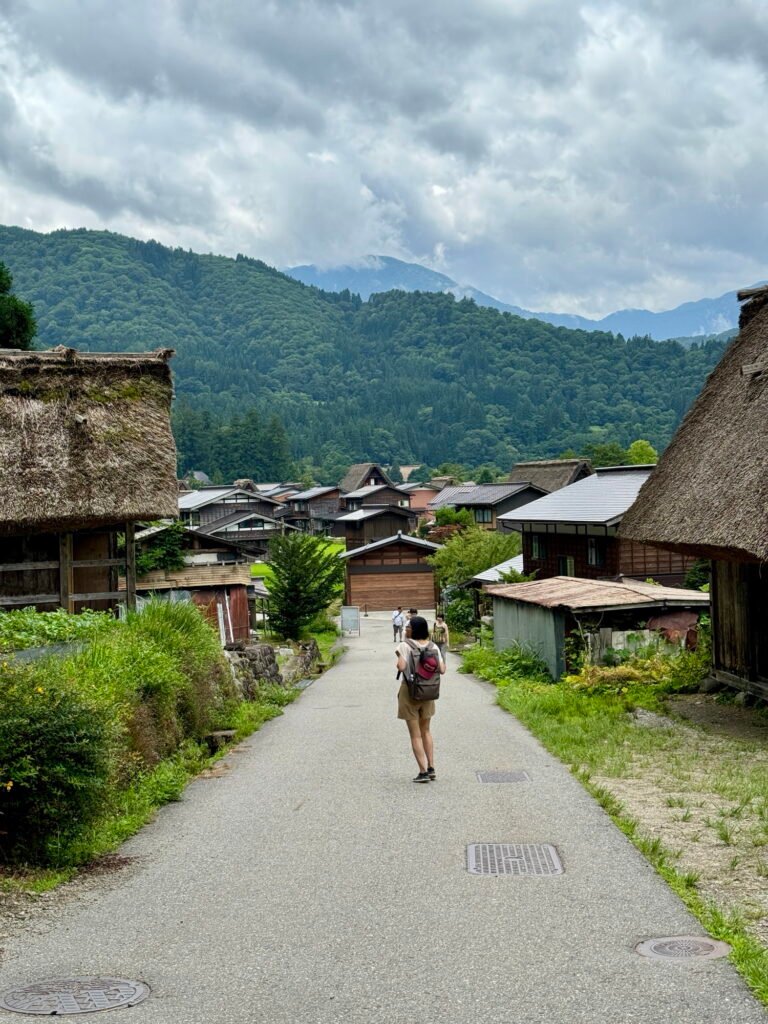
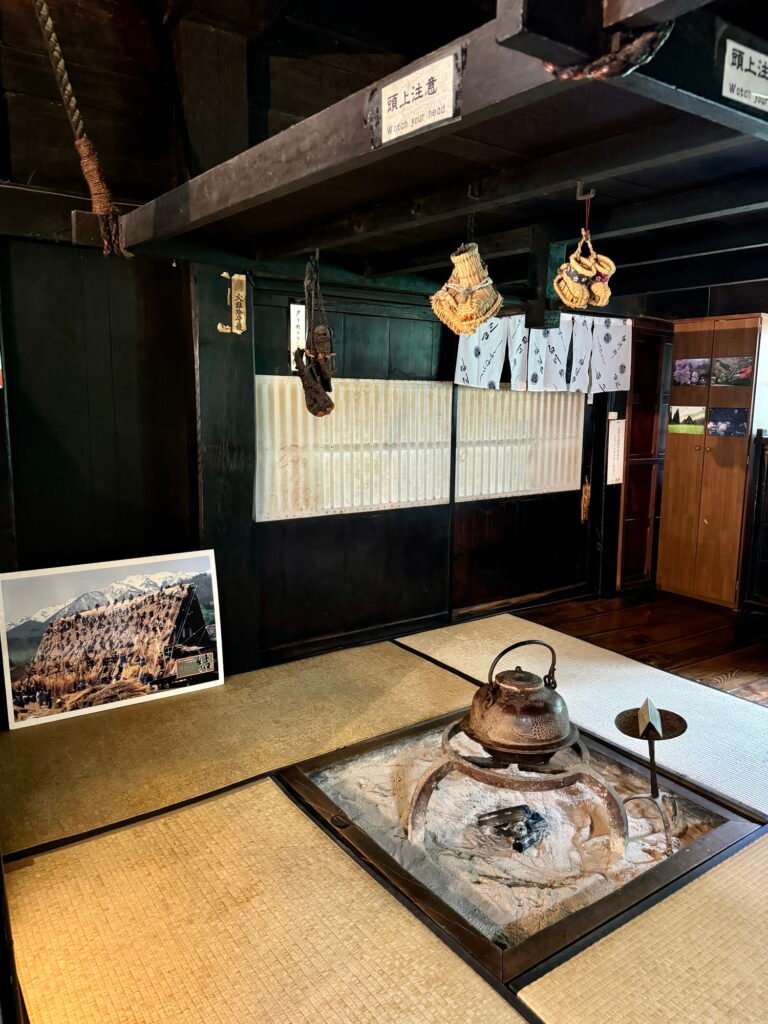
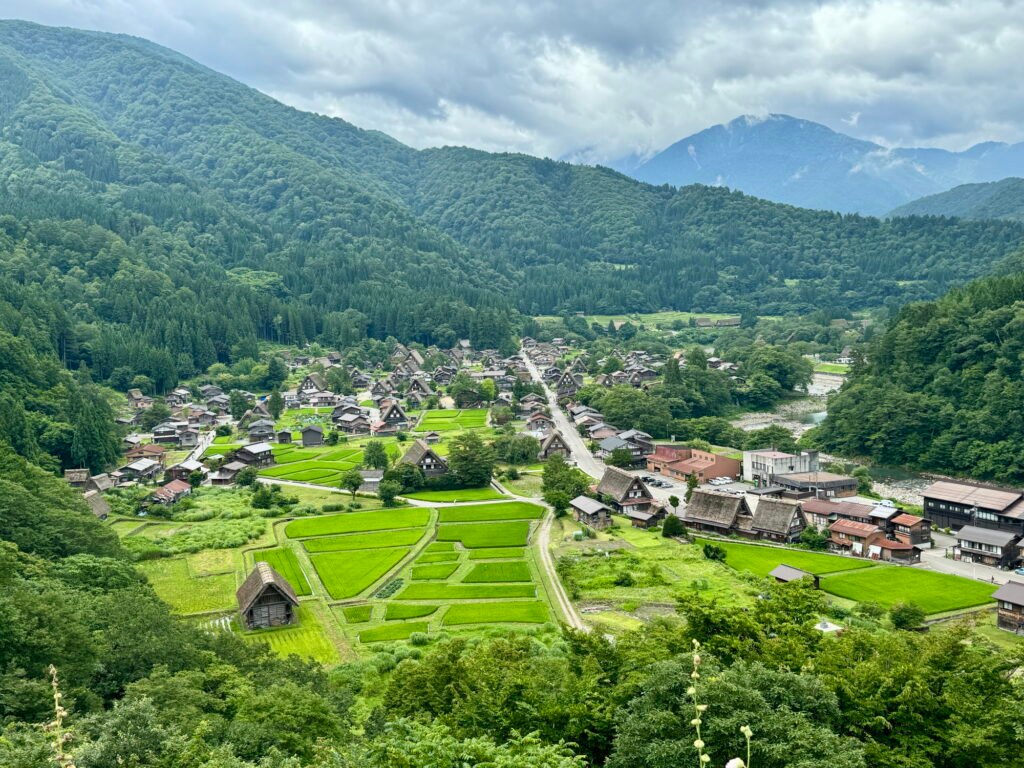
6. Takayama: A Step Back in Time
Summer Heat Level: 🔥🔥 (Warm but manageable)
Takayama is a beautifully preserved town that offers a blend of history, culture, and scenic walks. Nestled in the Japanese Alps, it offers pleasant summer weather compared to Japan’s bigger cities, making it an amazing summer escape.

Best Things We Enjoyed in Takayama:
- Start Your Day at the Morning Markets: Begin your morning at Miyagawa Morning Market (open 7 AM–Noon), where local farmers and artisans sell fresh produce, handmade crafts, and delicious street food. Strolling along the riverside stalls while snacking on local specialties like Hida beef skewers or Hida beef sushi was a great way to start the day.
- Visit Serene Shrines: Sakurayama Hachimangu Shrine is a peaceful Shinto shrine in Takayama, offering a tranquil retreat from the bustling town. In summer, the shrine is adorned with delicate wind chimes, their soft sounds creating a calming atmosphere as they sway in the breeze. One of the unexpected highlights was feeding the koi fish in the pond, which turned out to be a surprisingly fun and relaxing experience.
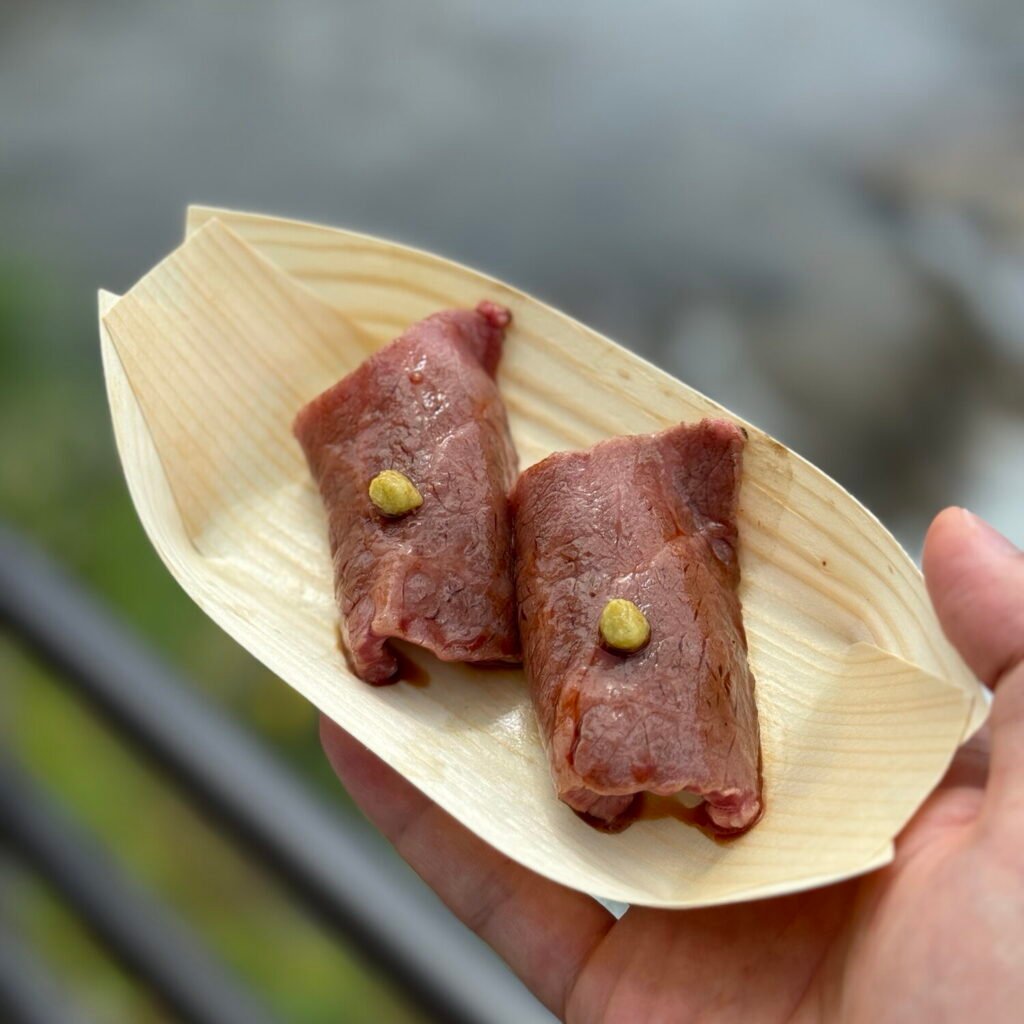

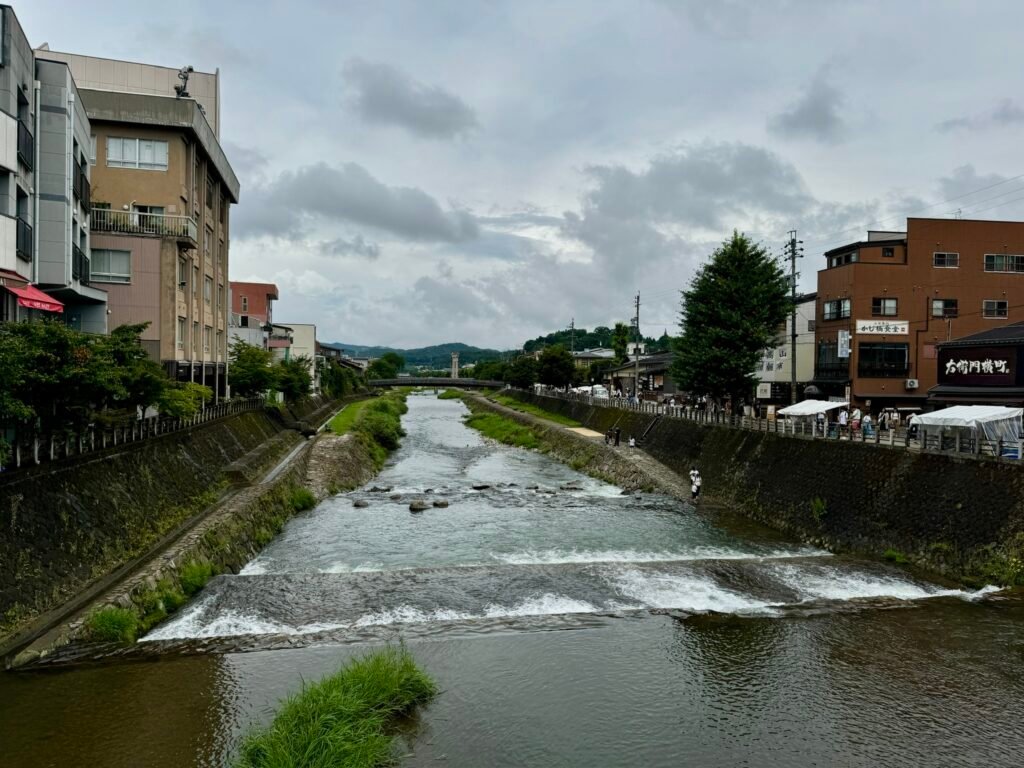

- Step Into Takayama’s Historic Past:
- Sanmachi Traditional Buildings – These picturesque Edo-period streets are lined with wooden merchant houses, sake breweries, and small museums. Walking here felt like stepping back in time!
- Yoshijima Traditional House – A beautifully preserved merchant house, showcasing traditional Japanese architecture and intricate woodwork.
- Takayama Jinya (open 9 AM–5 PM, last entry 4:30 PM) – This 17th-century (the Edo period) government building was once the administrative center of the region. Even from the outside, the historic atmosphere was impressive.
- A Scenic Walk Through the Temple District: Higashiyama Teramachi is a scenic and peaceful walking route that winds through several historic temples in Takayama. The full loop is 3.5 miles and typically takes a couple of hours, allowing time to explore the temples along the way. Due to time constraints, we only walked the section between Unryuji Temple and Soyuji Temple, but even this shorter route was a highlight of our visit. The quiet trails, shaded paths, and centuries-old wooden temples made for a serene and immersive experience, offering a glimpse into Takayama’s deep spiritual history. It’s a perfect escape in the heart of Takayama.
- Explore Takayama at Night: Takayama’s charm doesn’t fade when the sun goes down—it takes on a dreamlike atmosphere. After dinner, we took a night stroll along the Miyagawa River and crossed the illuminated Nakabashi Bridge, enjoying the quiet streets of Sanmachi Suji. It was a perfect way to end the day.
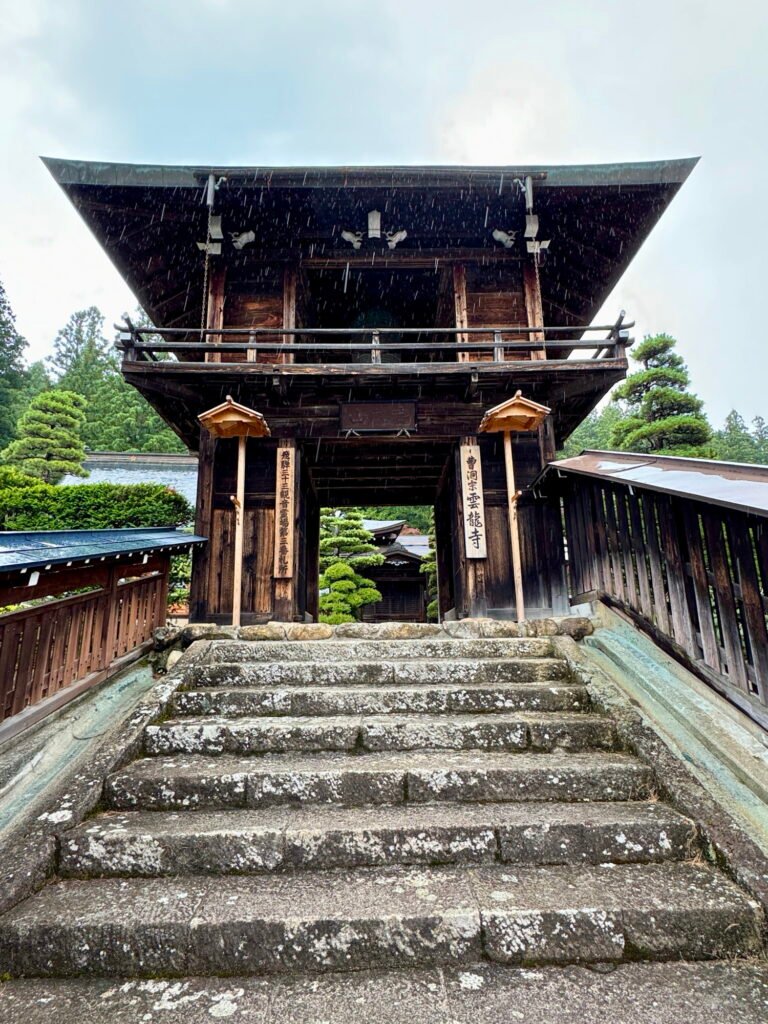

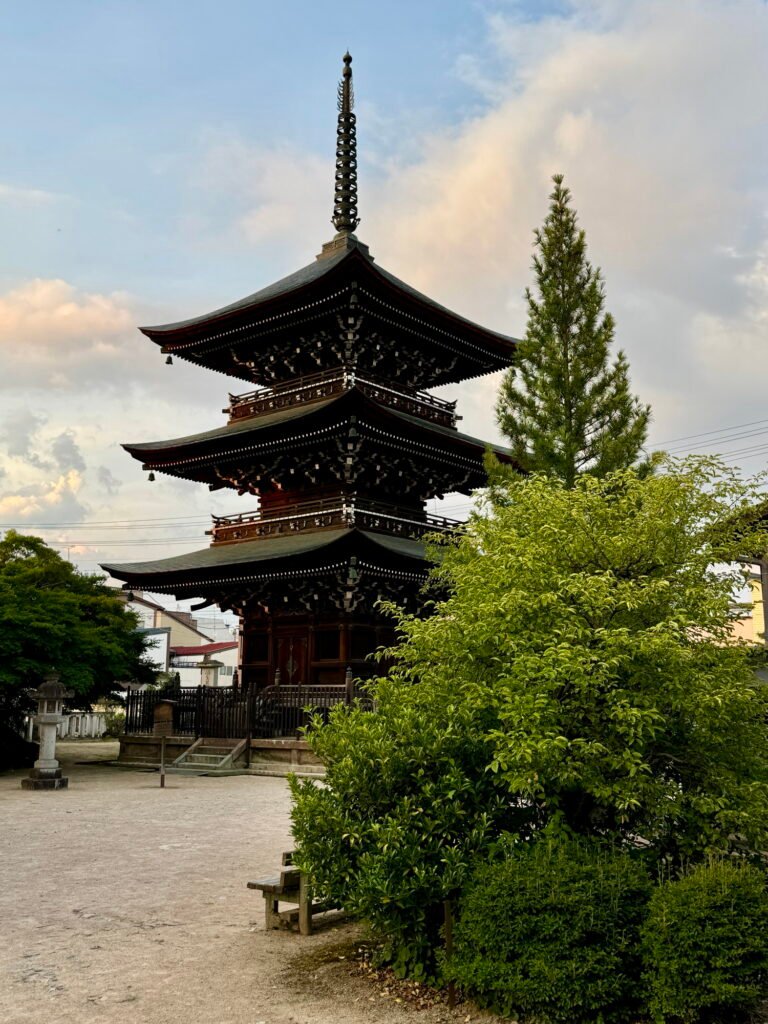

7. Togakushi: Serene Forests & Spiritual Pilgrimage
Summer Heat Level: 🔥🔥 (Hot in mid-day, but overall manageable with lots of shades)
Hidden deep in the towering cedar forests of Nagano Prefecture, Togakushi Shrine is a place where spirituality, nature, and legend intertwine. This complex of five ancient shrines sits at the base of the Togakushi mountain range, a site of Shinto worship and mountain asceticism for centuries. Just an hour by bus from Nagano City, Togakushi offers a refreshing summer escape, where the cool shade of ancient trees makes hiking through these sacred grounds both comfortable and awe-inspiring.
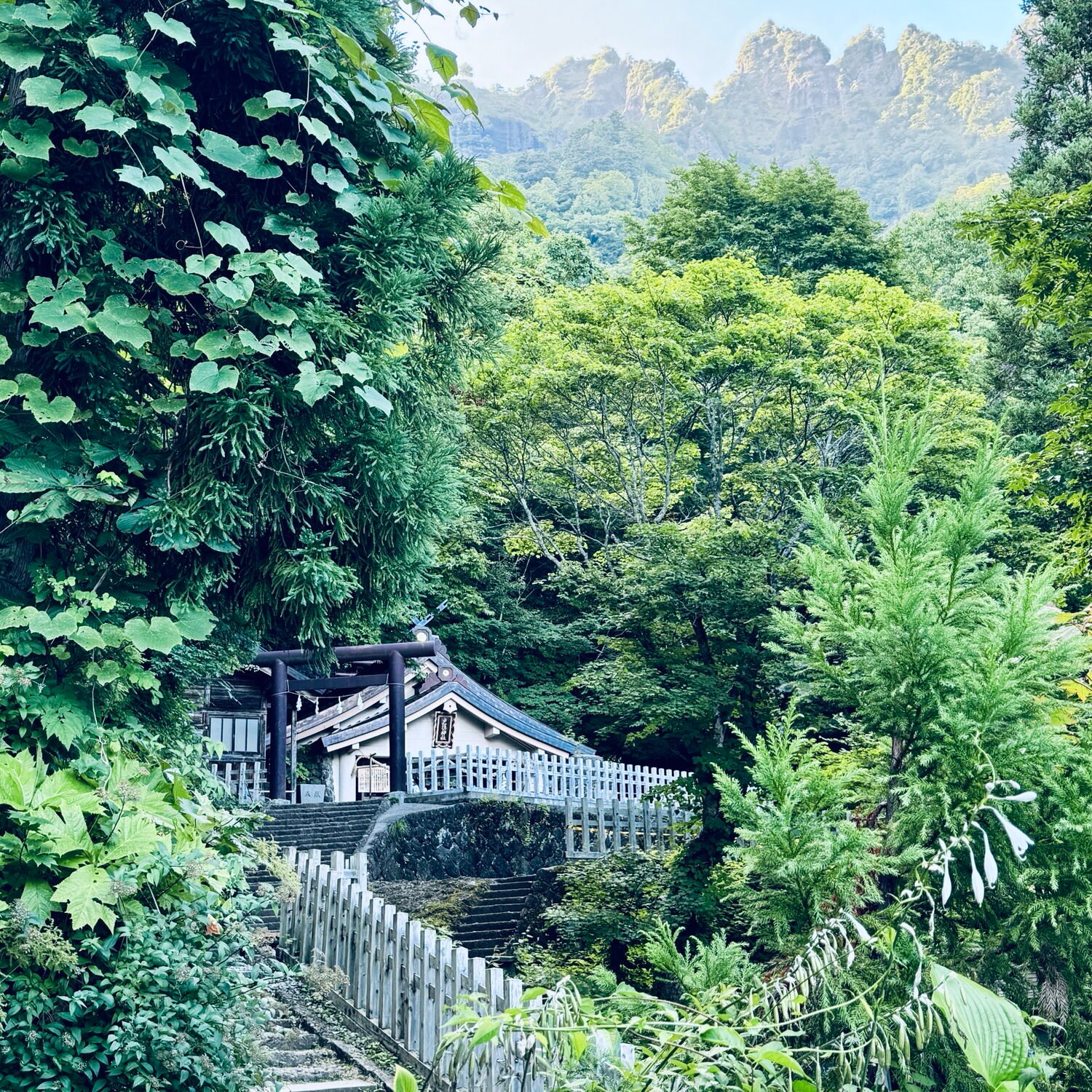
Best Experiences We Enjoyed in Togakushi
- Hike the legendary Togakushi Five-Shrine Pilgrimage (Togakushi Kodo Trail): A 5-mile trail that took us through stunning forests, ancient stone paths, and steep staircases leading to each of the sacred shrines. The experience was not just a hike through nature, but a spiritual journey filled with history and breathtaking sights:
- Hokosha– Lower Shrine: Dedicated to the god of learning and the arts, this shrine is where the trail begins.
- Hinomikosha: A smaller shrine dedicated to the god of fire and the performing arts.
- Chusha– Middle Shrine: The largest of the five shrines, dedicated to the god of wisdom. Nearby, we found a small tourist center and plenty of soba restaurants to recharge.
- Kuzuryusha: Dedicated to the nine-headed dragon, the guardian of water, this shrine is deeply connected to the legends of Togakushi.
- Okusha– Upper Shrine: The most famous and sacred shrine in Togakushi, dedicated to the god of strength. As we ventured toward the shrine, the majestic cedar-lined avenue unfolded before us, with towering ancient trees standing like silent guardians of the path. Walking through this atmospheric and awe-inspiring trail, we felt a profound sense of tranquility and reverence, as if we had stepped into a sacred realm untouched by time. This portion of the hike is something you absolutely don’t want to miss, even if you’re short on time. The sheer beauty and spiritual presence of the towering cedars make it one of the most breathtaking and unforgettable paths we’ve ever walked– a place where nature and history come together in perfect harmony.
- Bonus Stop: Kagami-Ike Pond. If you have extra time and energy, a 30-minute walk from Okusha leads to this serene mirror-like pond. On clear days, the Togakushi mountain range reflects perfectly on the water’s surface, creating a picture-perfect view.
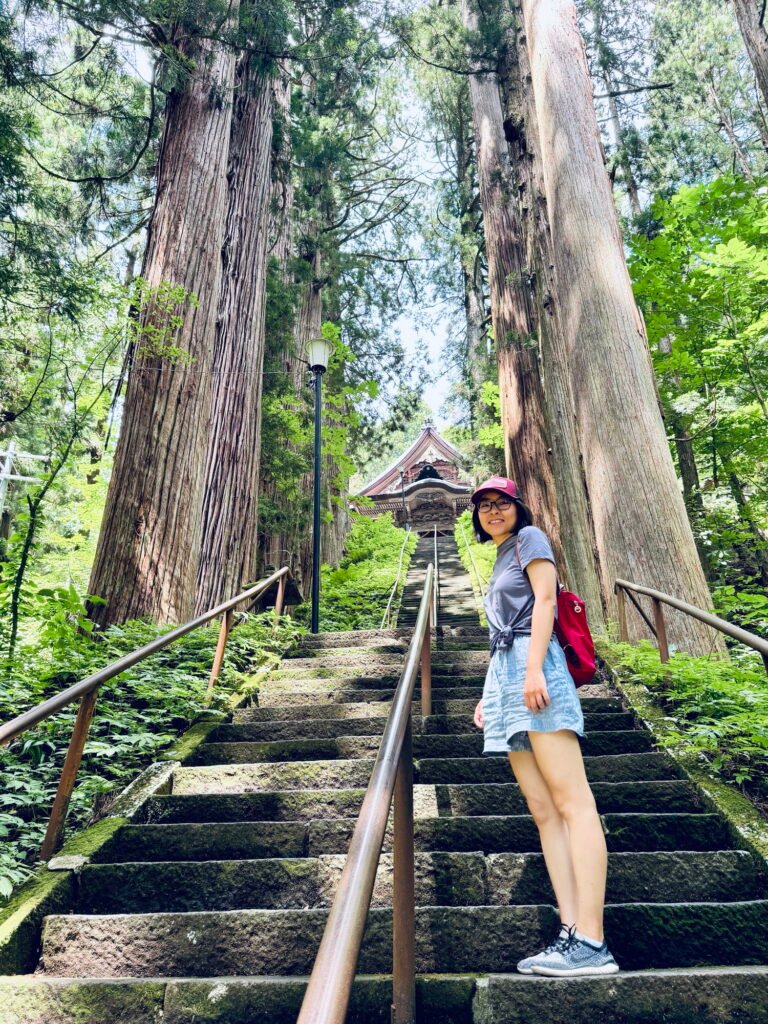
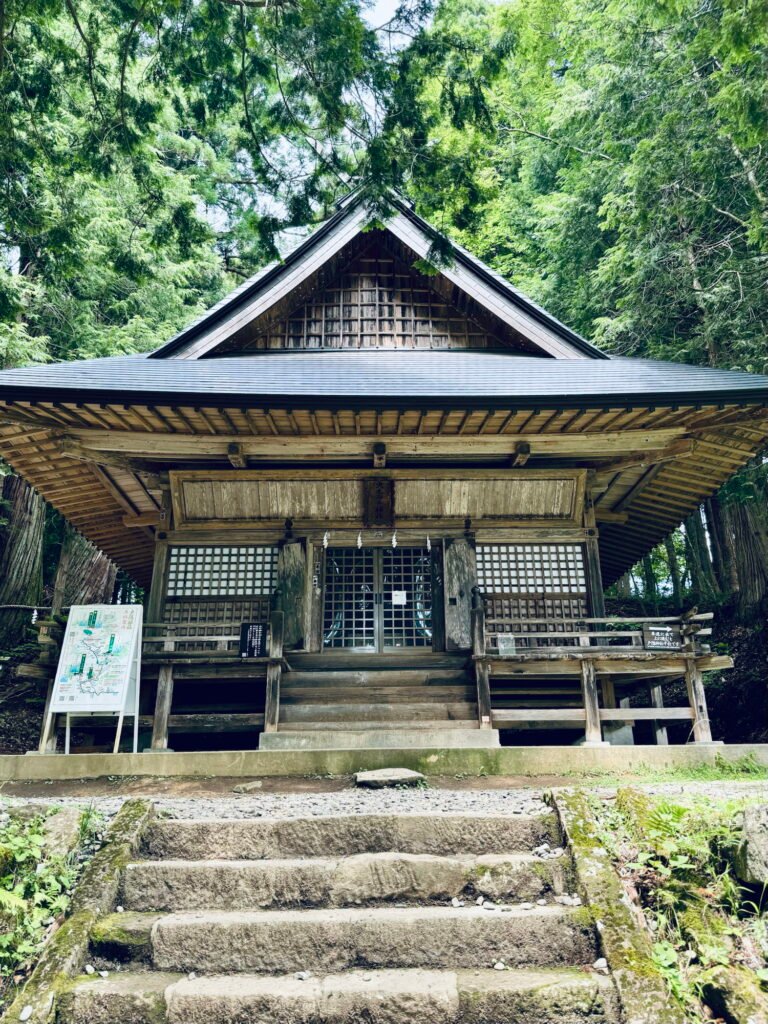
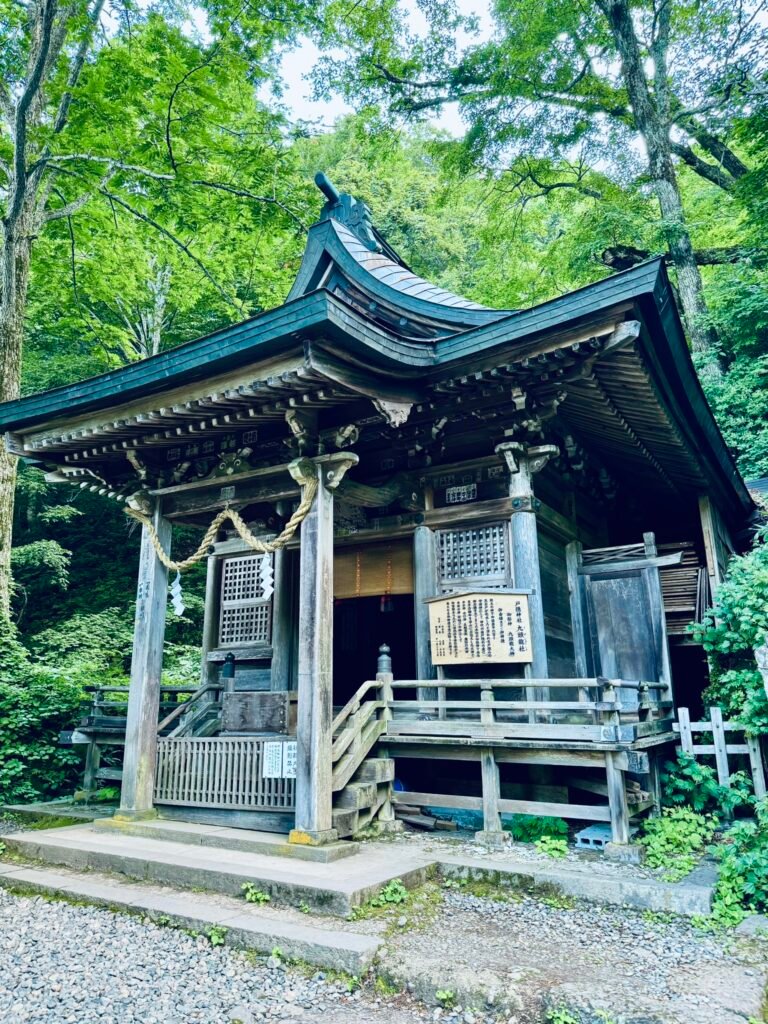

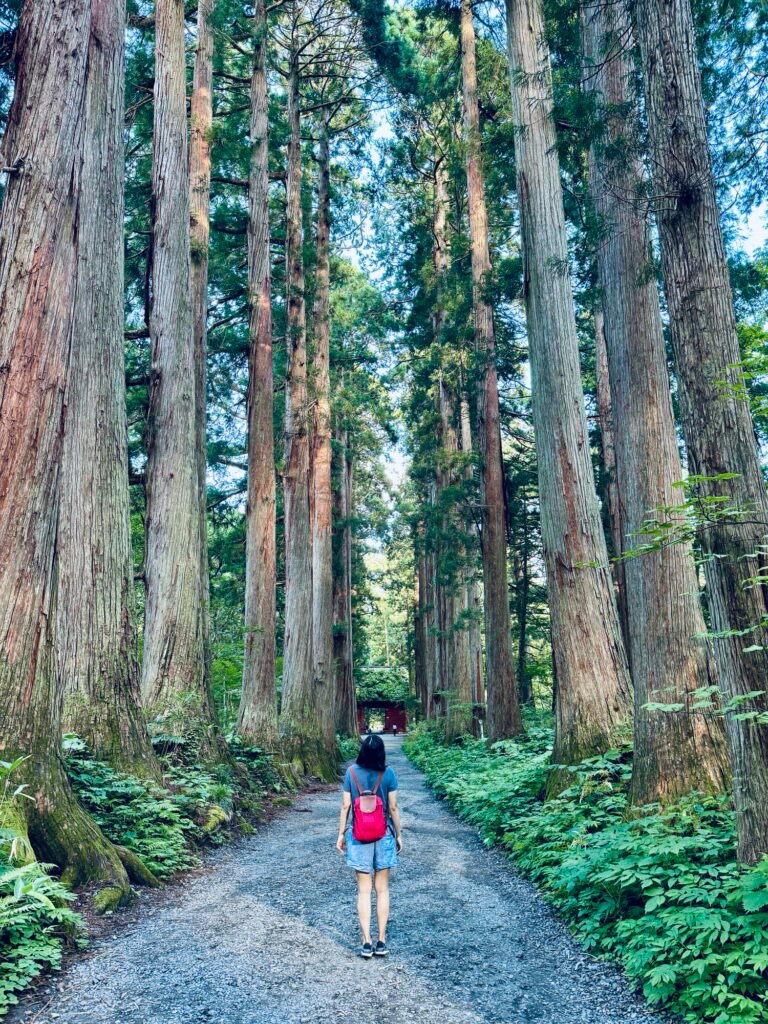
- Collect Special Rubbings: A fun and unique way to commemorate your journey in Togakushi is with the Takuhon Shuincho, a special book for collecting rubbings from 30 stone pillars scattered along the ancient Togakushi Kodo trail. We only discovered it midway through our hike at the Tourist Information Center near the Middle Shrine—so we sadly missed many earlier spots. If you’re interested, be sure to grab a copy before starting your hike in the town of Togakushi!
- Savoring Togakushi’s Famous Soba Noodles: Togakushi is renowned for its soba (buckwheat noodles), and no visit is complete without trying a bowl of these refreshingly light, handmade noodles. We stopped at Gokui near the Middle Shrine, where the soba was delicious, and there was no queue. While the most famous soba restaurant, Uzuraya, is widely regarded as the best, the 1–2 hour wait was too long for us, so we opted for a quieter, equally satisfying option.
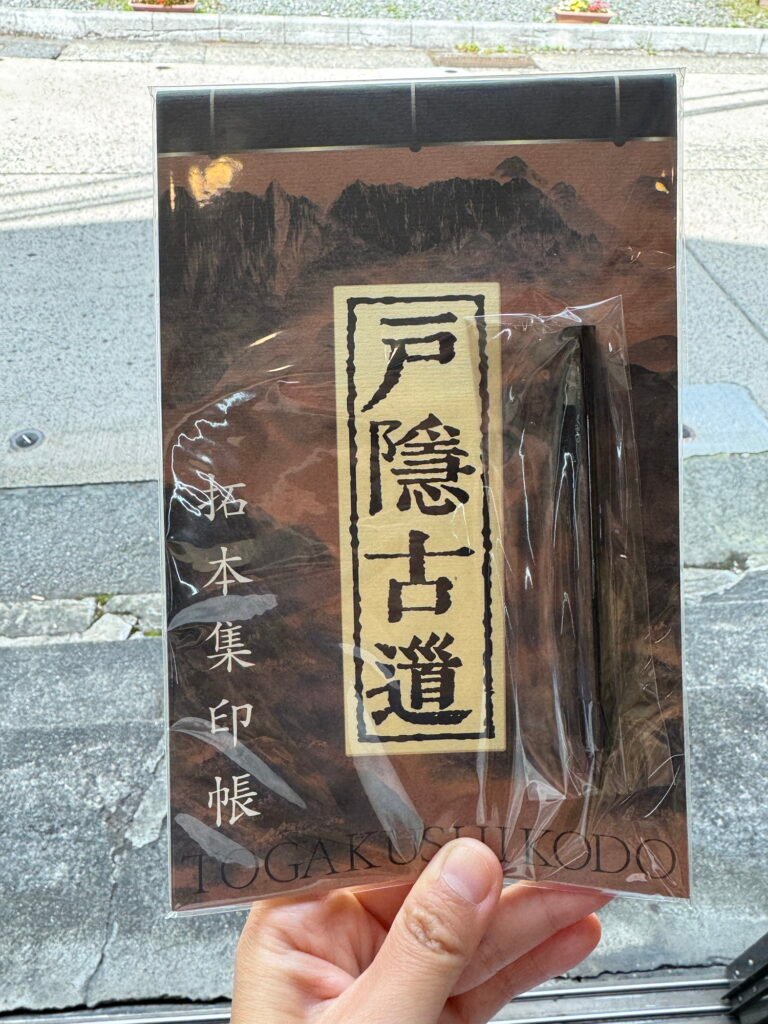

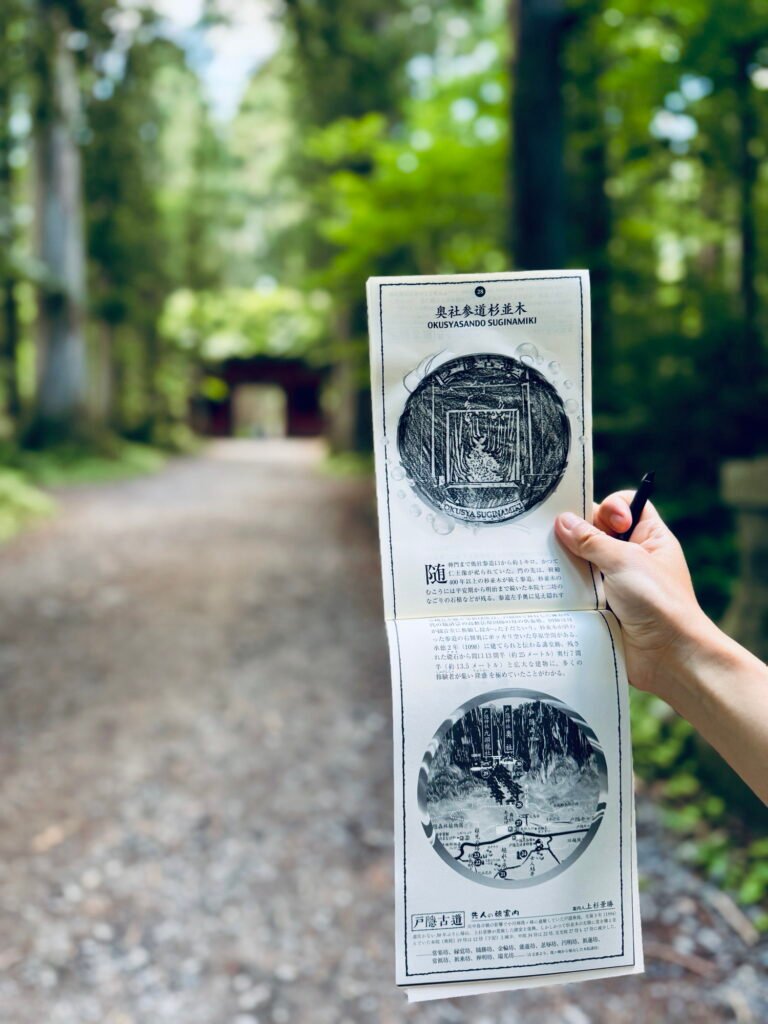
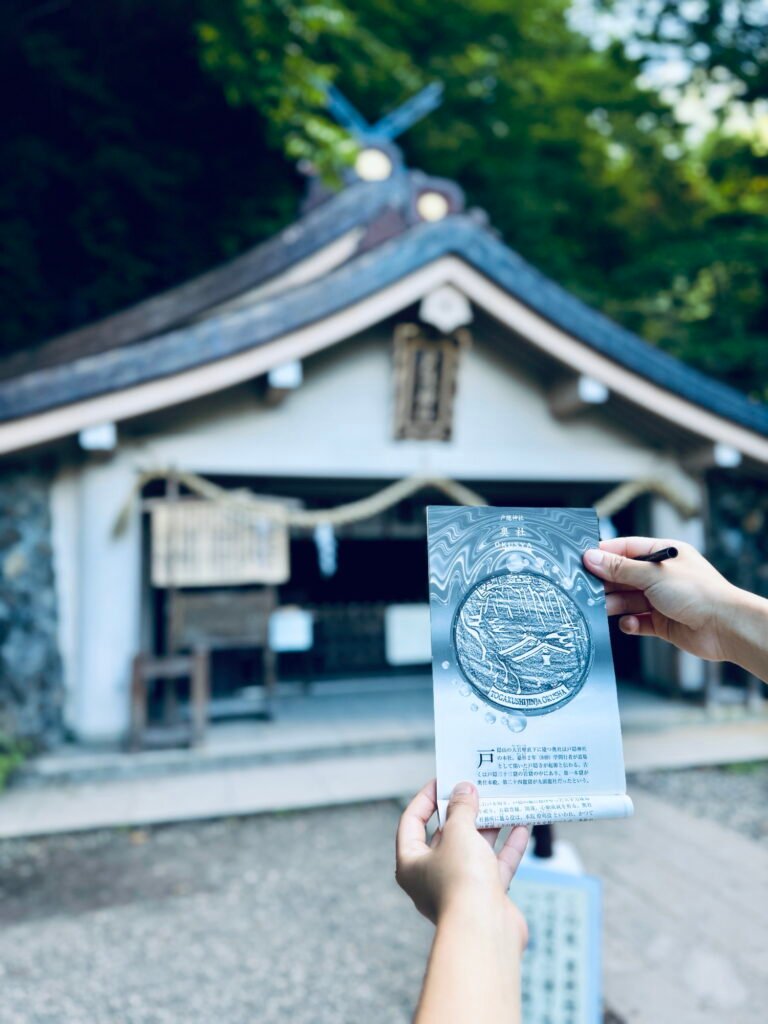

- Step Into the World of Ninjas: Togakushi isn’t just about shrines—it’s also known for its deep connection to Japan’s ninja history. The Togakushi Ninja Museum and Trick House offer a fun and interactive way to learn about ninja training, tools, and history. It was a great way to wrap up our visit with some lighthearted fun after a long hike.
8. Kifune Shrine: A Magical Riverside Escape
Summer Heat Level: 🔥🔥🔥 (Hot & Humid, but with Cool Dining Spots)
After a few sweltering days in Kyoto’s summer heat, we found ourselves desperately seeking relief. Having already spent over two months in Southeast Asia, we didn’t expect Kyoto to feel even hotter and more humid—but it absolutely did! By day three, hiding in shopping malls had lost its appeal, and we started looking for a cooler outdoor escape. That’s when we discovered Kifune Shrine and Enryaku-ji Temple (the next place on this list)—two places that completely turned our Kyoto experience around.
Tucked away in the forested mountains of Kyoto, Kifune Shrine is a place of serenity, tradition, and natural beauty, dedicated to the deity of water. While the summer heat can still linger during the day, the true highlight here is Kawadoko dining—a uniquely Japanese experience where we enjoyed a meal on tatami platforms set directly above a flowing river.
The cool water rushing beneath us and the gentle mountain breeze offered instant relief—like stepping into a cold shower on a hot day. It was one of those simple yet unforgettable moments that let us slow down, savor the atmosphere, and truly appreciate the peaceful side of Kyoto’s summer.

Best Experiences at Kifune Shrine:
- Try Kawadoko dining, where you sit on wooden platforms above the flowing river, enjoying the cool air and soothing sounds of the water as you eat.
- Walk the lantern-lined stone steps leading up to the shrine—one of the most picturesque approaches in Kyoto.
- Getting a special Omikuji (fortune slip) is another experience we absolutely loved at Kifune Shrine—and it was unlike any other fortune-telling we had seen at temples in Japan! Instead of reading your fortune right away, once we randomly picked a slip, we had to place the paper onto the sacred water. As we watched, the hidden words slowly appeared on the paper, revealing our fate. It felt mystical and magical, perfectly fitting for a shrine dedicated to the deity of water. This unique fortune-telling experience made our visit even more memorable, adding a touch of wonder and anticipation to our time at Kifune Shrine.

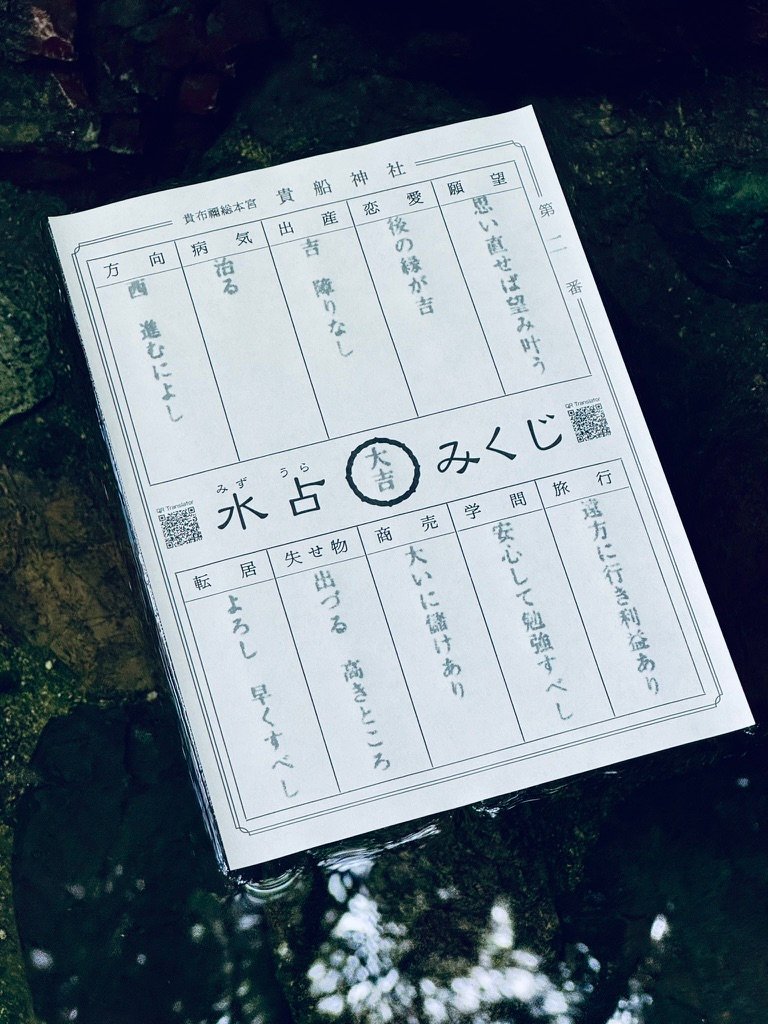

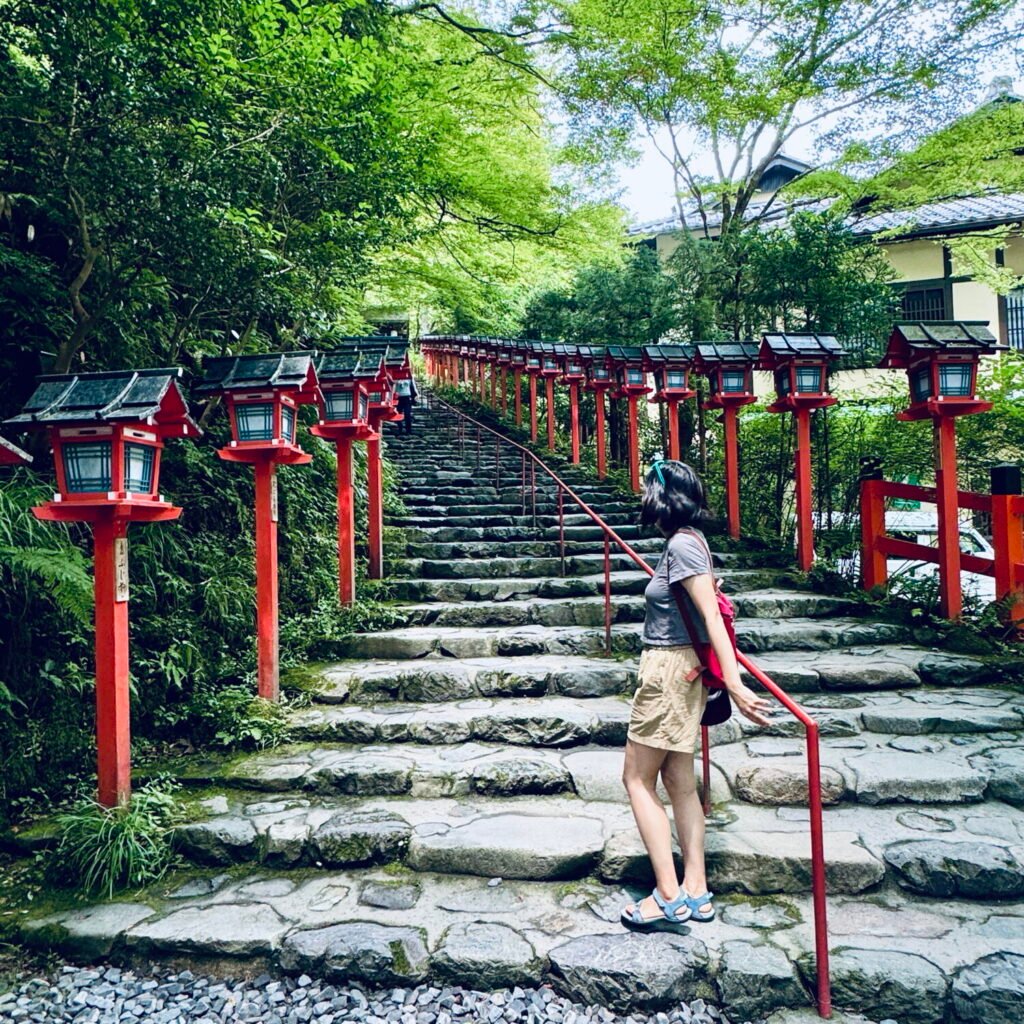
For those looking for more adventure, consider adding a hike to Mount Kurama and Kuramadera Temple. This 90-minute trek (one-way) starts from Kuramadera Temple’s West Gate near Kifune Shrine and involves a steep climb, but rewards hikers with breathtaking forest views and a deeper connection to Kyoto’s sacred mountains.
9. Enryaku-ji Temple: Tranquility on Mount Hiei
Summer Heat Level: 🔥🔥🔥 (Hot & Humid, but manageable)
Perched high on Mount Hiei, Enryaku-ji Temple is one of Japan’s most sacred and historically significant Buddhist temple complexes, and a designated UNESCO World Heritage Site as part of the “Historic Monuments of Ancient Kyoto.” It’s famously known as the home of the marathon monks, who undertake the demanding spiritual practice of kaihōgyō—a form of long-distance walking meditation through the mountains. With its rich spiritual heritage, serene forested surroundings, and sweeping views, Enryaku-ji exudes a powerful sense of peaceful mountain energy.
While it can still feel hot and humid at midday, we found the cooler mountain air here to be a welcome relief from the stifling heat of Kyoto. Being up in the mountains, the weather felt more breathable, peaceful, and far more enjoyable, making it an ideal summer escape into nature and reflection.

Best Experiences at Enryaku-ji Temple
- Explore the historic temple complex: Spread across three main areas—Tōtō (East Pagoda), Saitō (West Pagoda), and Yokokawa—Enryaku-ji is vast, quiet, and surrounded by tall trees and mountain mist. It feels like a world away from the crowds in the city.
- Take in the panoramic views of Lake Biwa: On clear days, the views from the mountaintop over Japan’s largest lake are absolutely stunning (though a little summer haze is to be expected).
- Enjoy a comforting bowl of soba – At the Enryakuji Bus Center café, we took a break and had a simple but delicious meal of warm and cold soba. The place was filled with lively local grandparents—chatting, saving seats for each other, and happily enjoying their meals—adding a warm, energetic vibe that made the experience feel truly local and memorable.



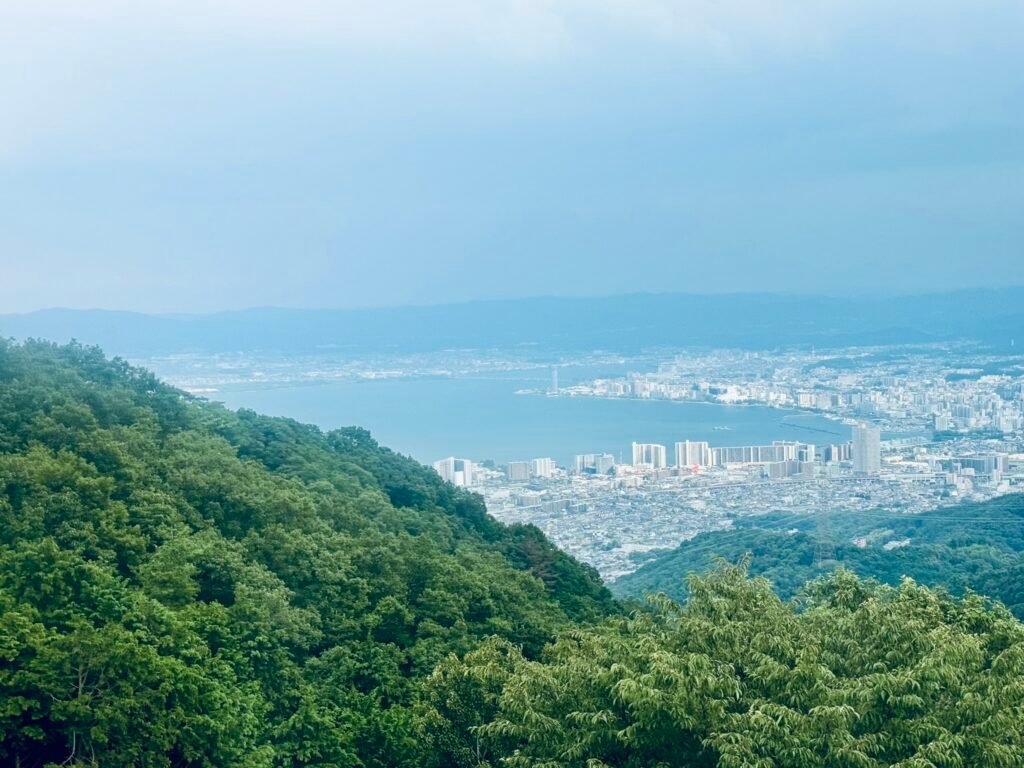
10. Daio Wasabi Farm: A Refreshing Green Escape
Summer Heat Level: 🔥🔥🔥 (Hot & Humid, but manageable)
Located in Matsumoto, Daio Wasabi Farm is one of the largest wasabi farms in Japan. It’s surrounded by lush greenery, crystal-clear spring water, and peaceful walking paths. Thanks to the constant flow of fresh water, the area feels cooler and more refreshing than many lowland spots—making it a great summer stop.
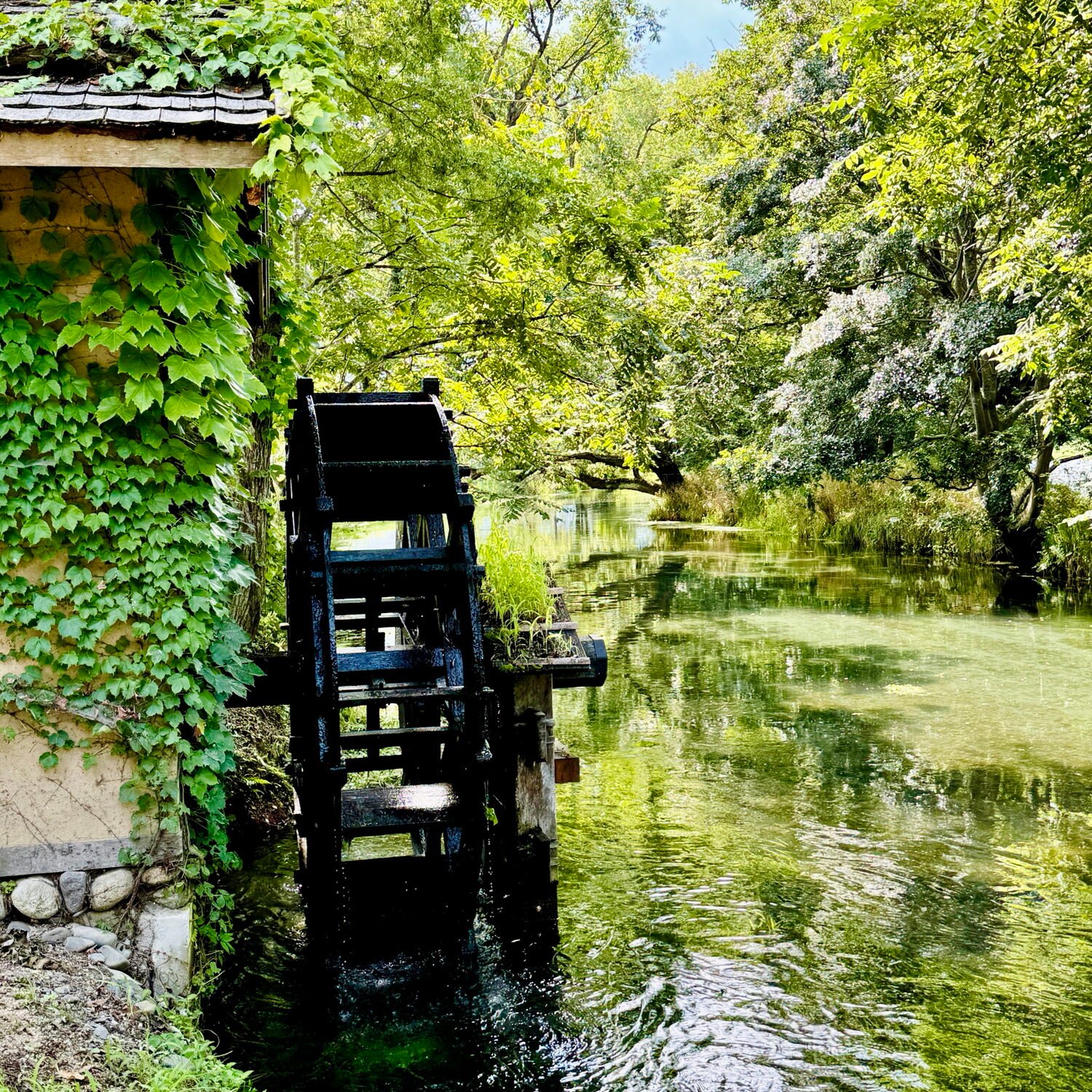
Things to do at Daio Wasabi Farm:
- Walk along scenic riverside trails: We enjoyed a peaceful stroll through shaded paths, surrounded by flowing spring water and rows of wasabi plants. As we walked, we learned that wasabi needs a cool environment to grow, so the fields are covered with special black cloth, with cool mountain water flowing gently underneath. When the wind blows, the cloth ripples like waves, creating a mesmerizing and calming sight that added to the charm of the experience.
- Try fresh wasabi ice cream and soba: As a big wasabi fan, I couldn’t resist getting triple scoops of the wasabi-flavored ice cream—and I have no regrets! Somehow, the signature wasabi heat that shoots up your nose felt like the perfect counter to the summer heat outside. Freshly grated wasabi is milder than the store-bought kind, but it delivers a deeper, more nuanced flavor that really shines in local dishes. We especially loved the cold soba and wasabi rice at Yusui Kamagama Daio-an, a cozy restaurant tucked right inside the farm. It was a refreshing and flavorful meal that made our visit all the more memorable.
- Visit the water mills: These picturesque mills, set beside tranquil streams, were famously featured in Akira Kurosawa’s films. When we visited, we were lucky to witness three groups of local teens and kids rafting upstream with the help of a coach. Each group had a different strategy to tackle the task, and once they all made it, they jumped into the water, cheered, and splashed around with joy. Watching their laughter and teamwork unfold in such a beautiful setting made for a truly fun and heartwarming memory.

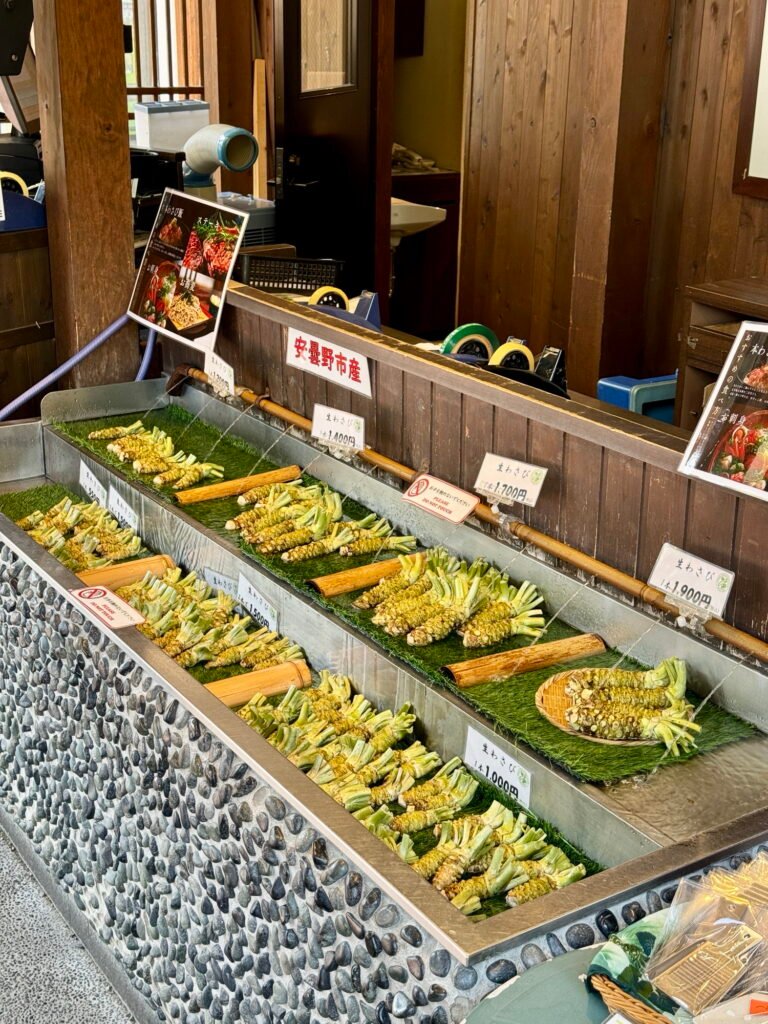

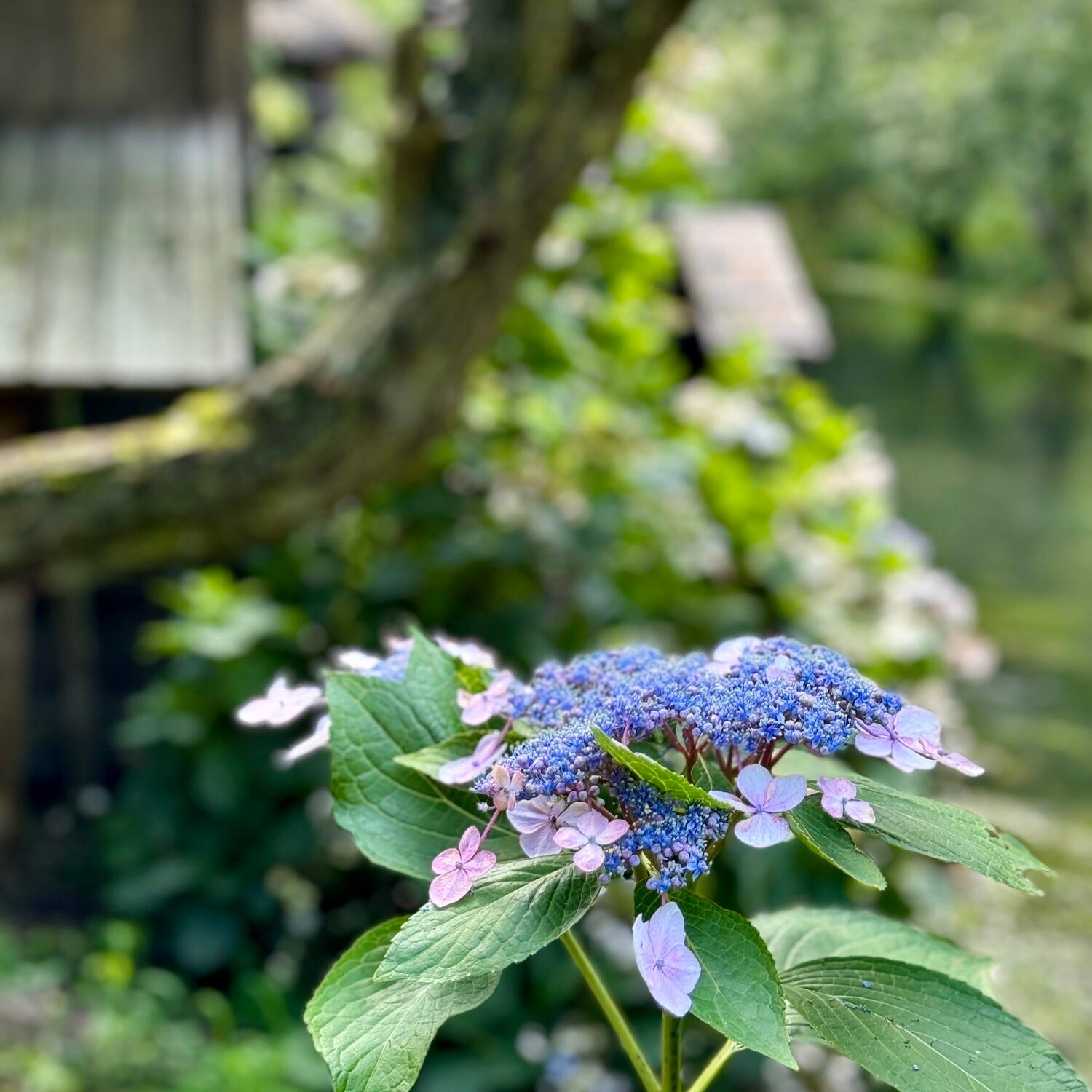
Final Thoughts
So there you have it—our most loved summer destinations in Japan, all discovered during our unforgettable three-week adventure. From snowy alpine peaks and misty mountain shrines to cool riverside meals and storybook villages, these places helped us escape the summer heat while still soaking in Japan’s rich culture, nature, and charm.
We hope this guide gave you some fresh ideas and inspiration for planning your own summer trip to Japan. Whether you’re chasing cooler temperatures, unique local experiences, or just a different pace of travel, there’s so much more to Japan in summer than meets the eye. Happy planning—and may your journey be just as refreshing and memorable!
The End. Happy Traveling!



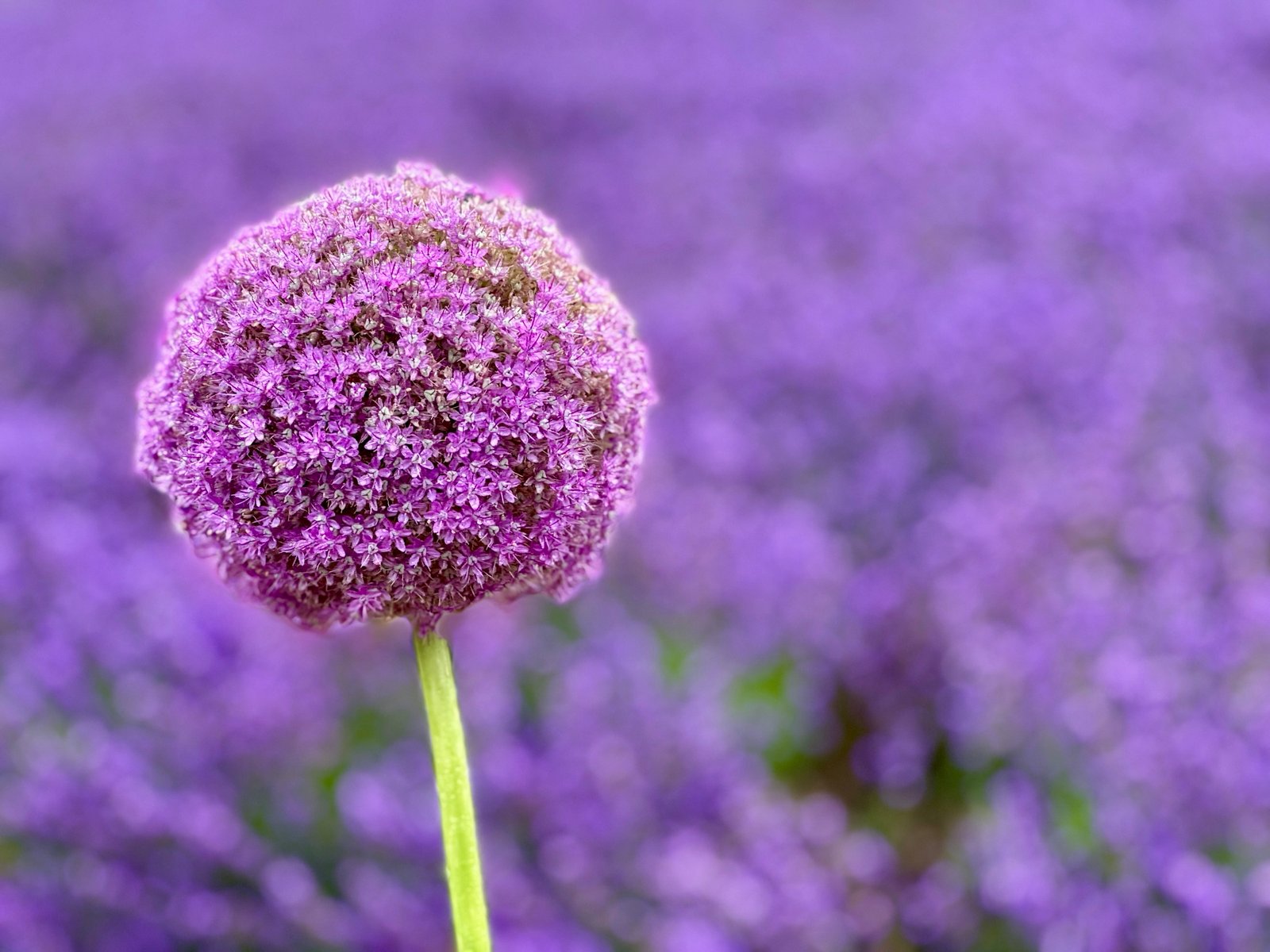

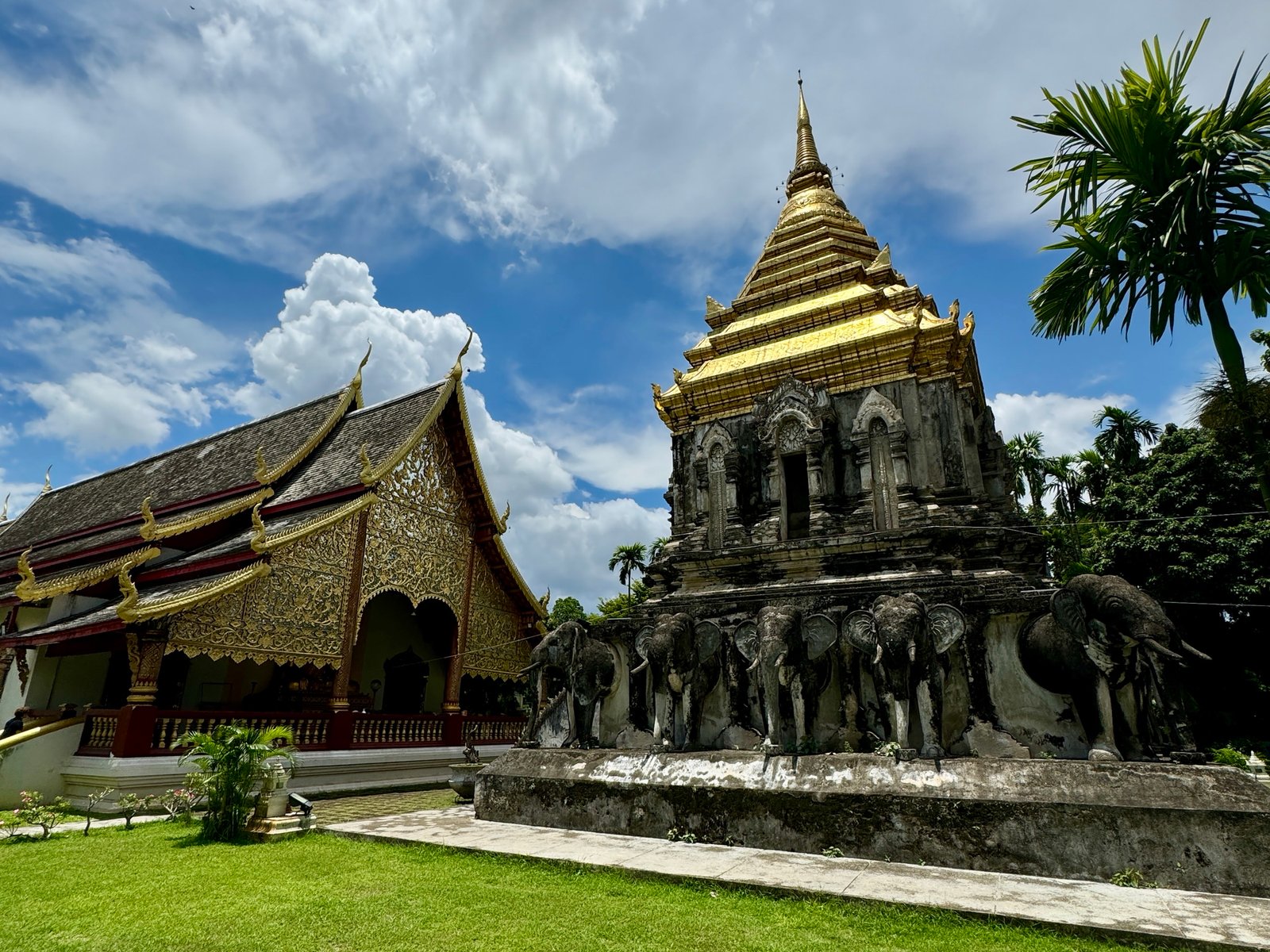
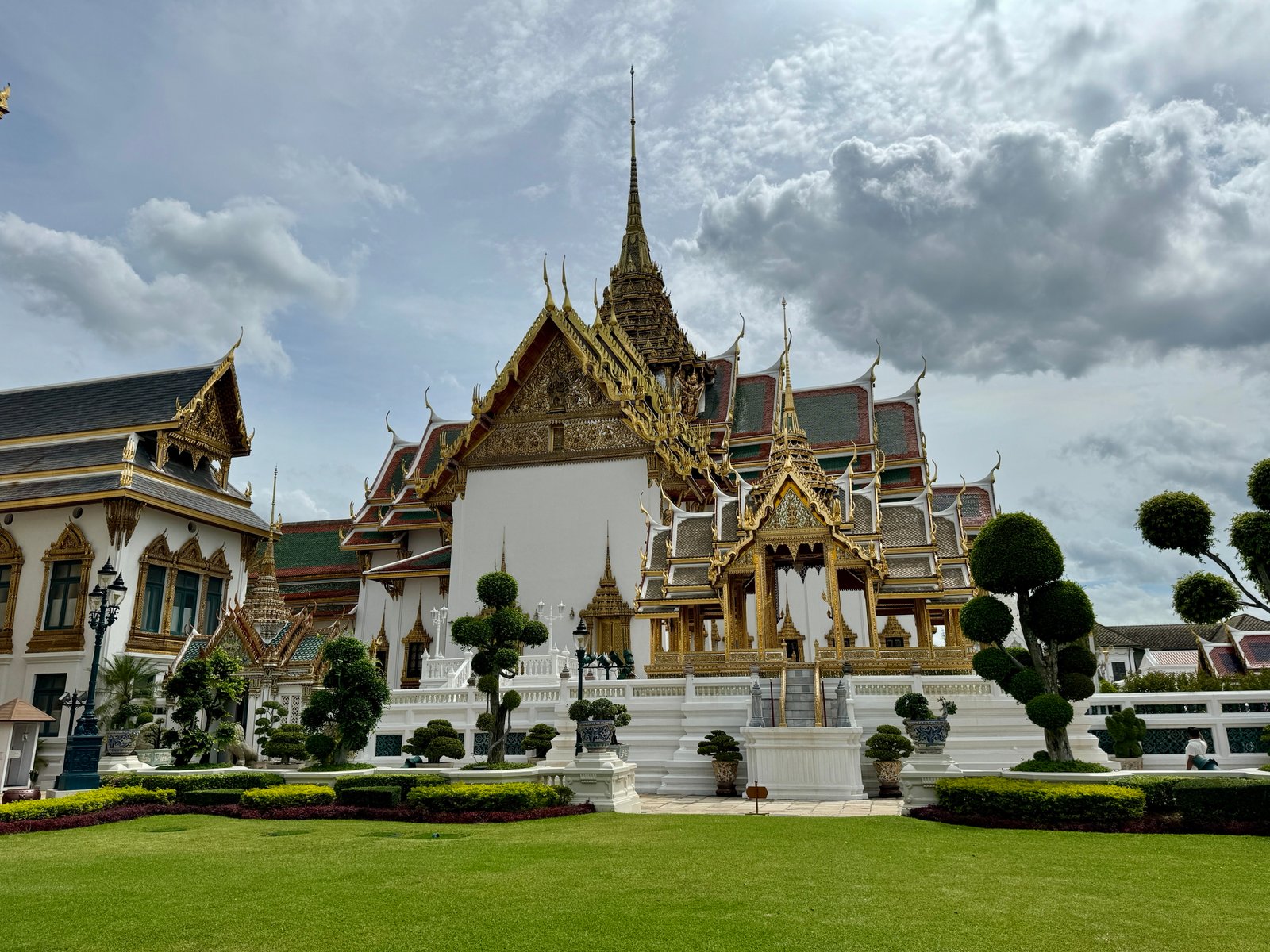
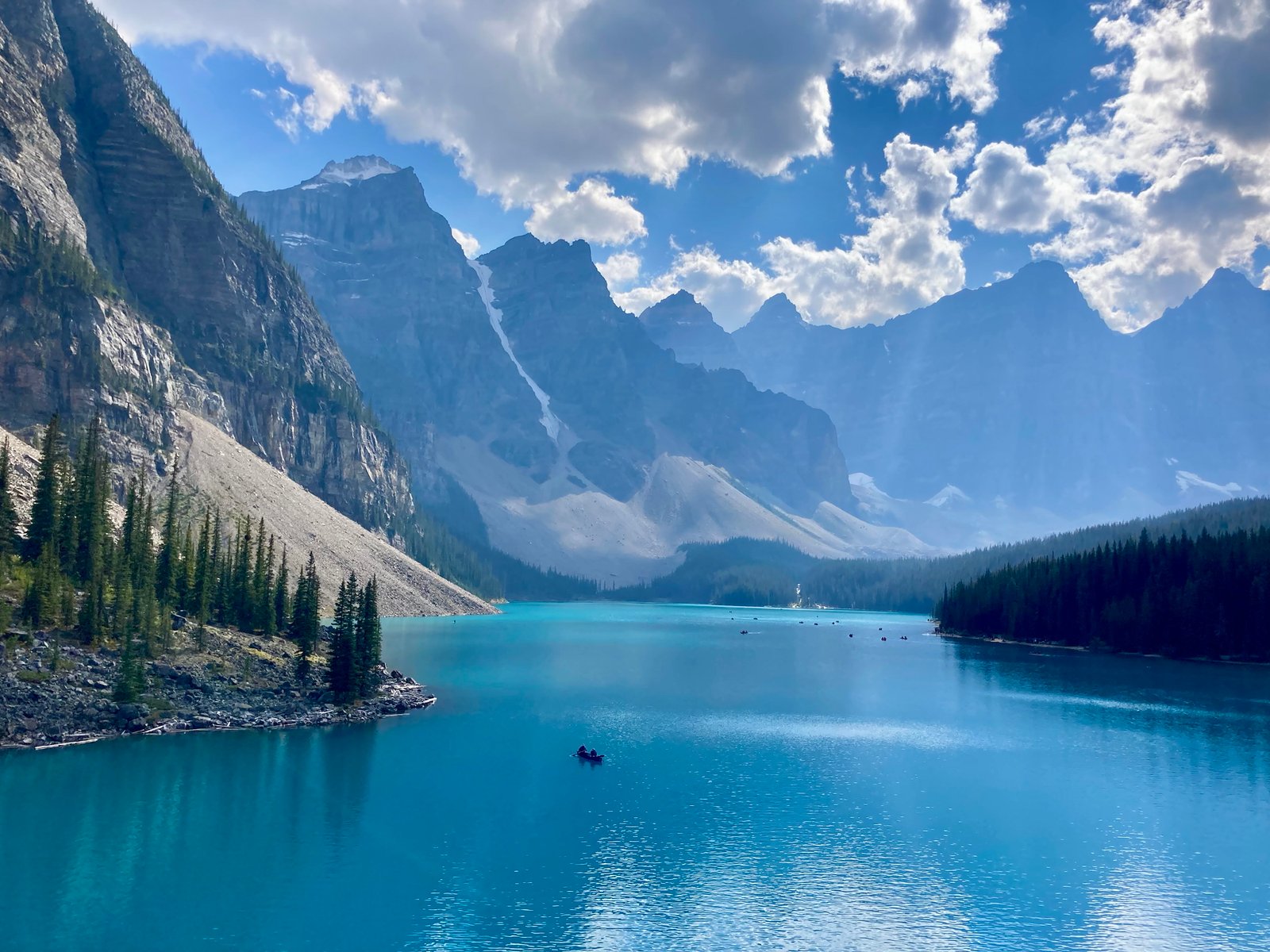
Leave a Reply